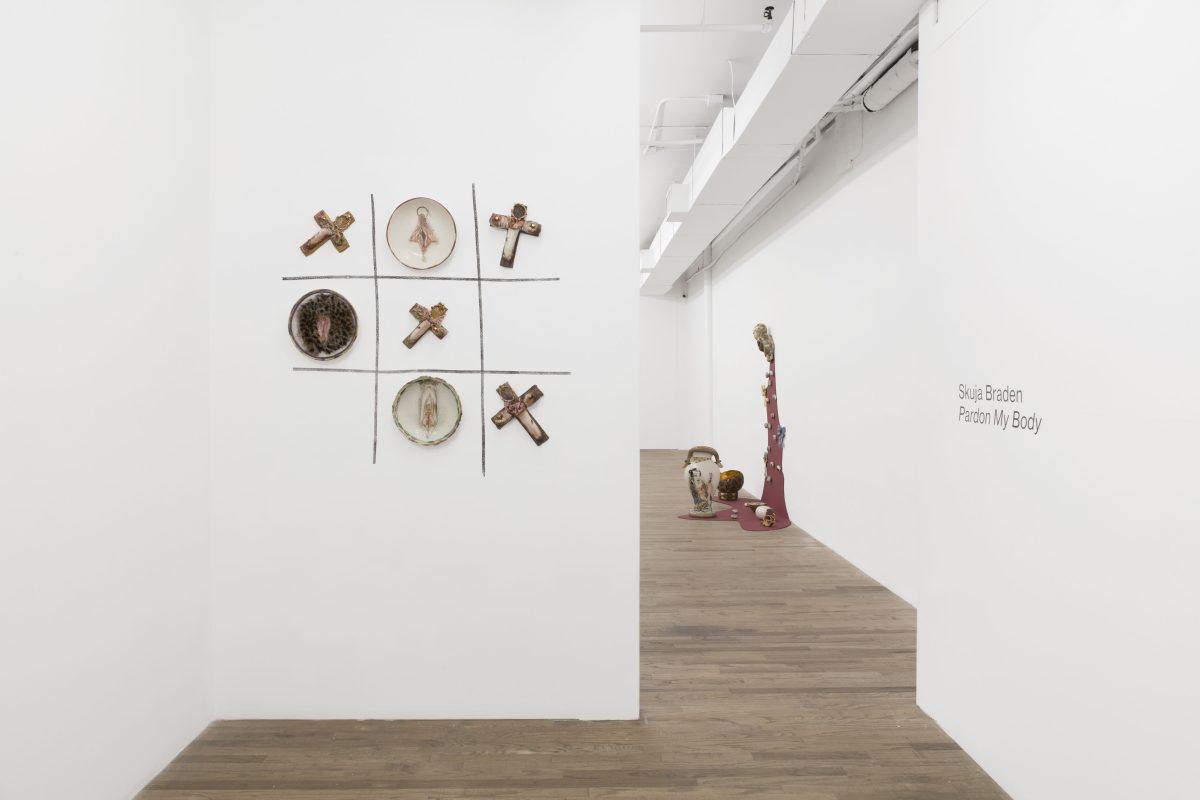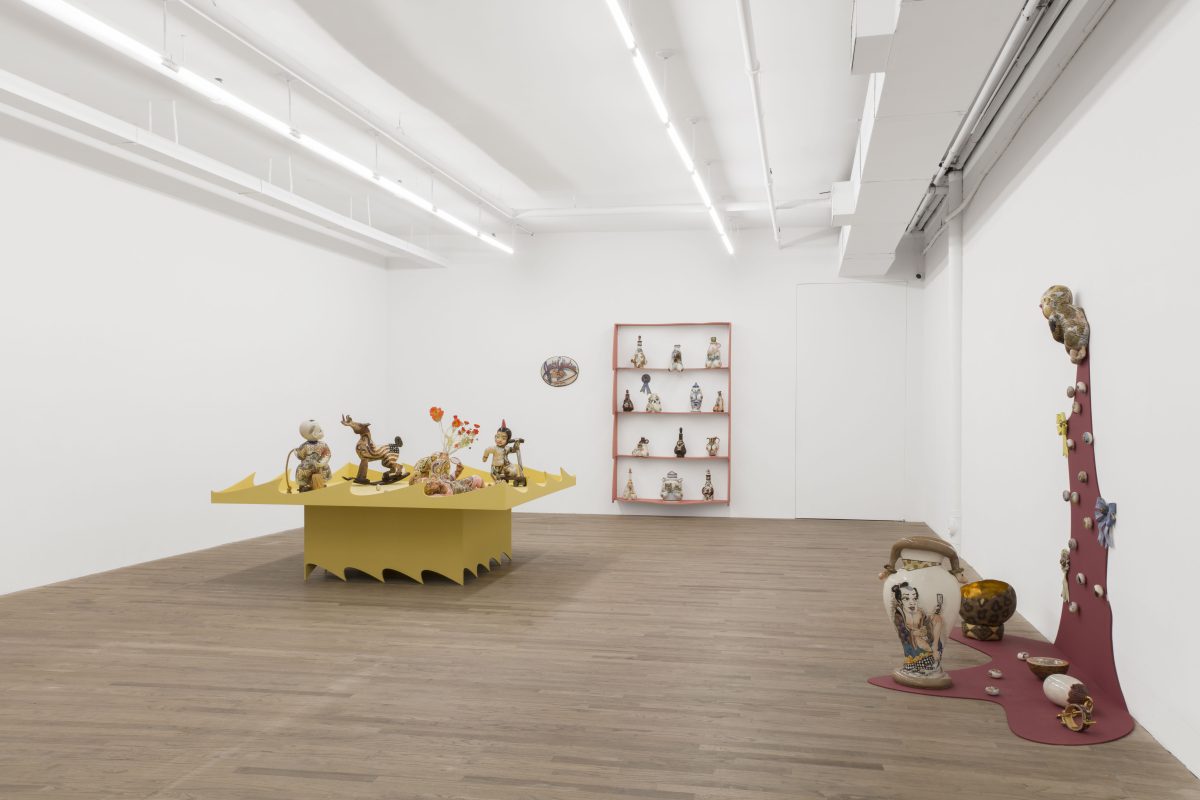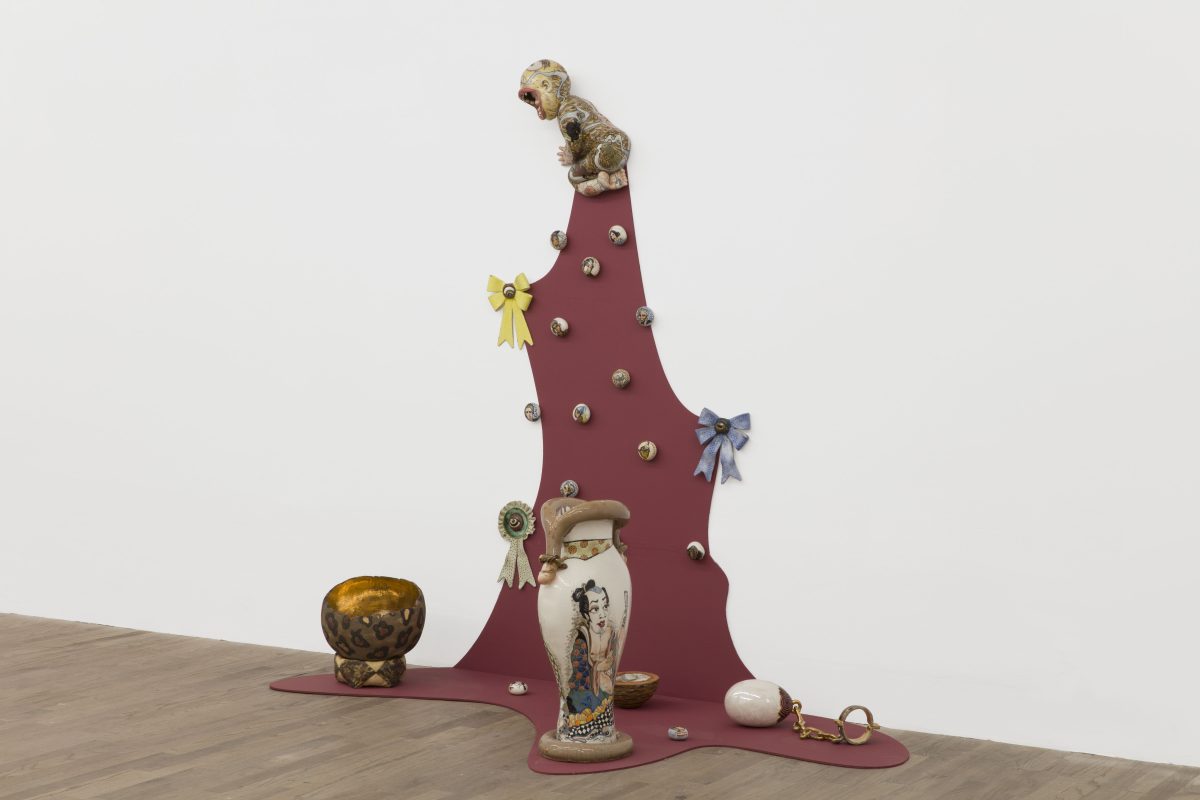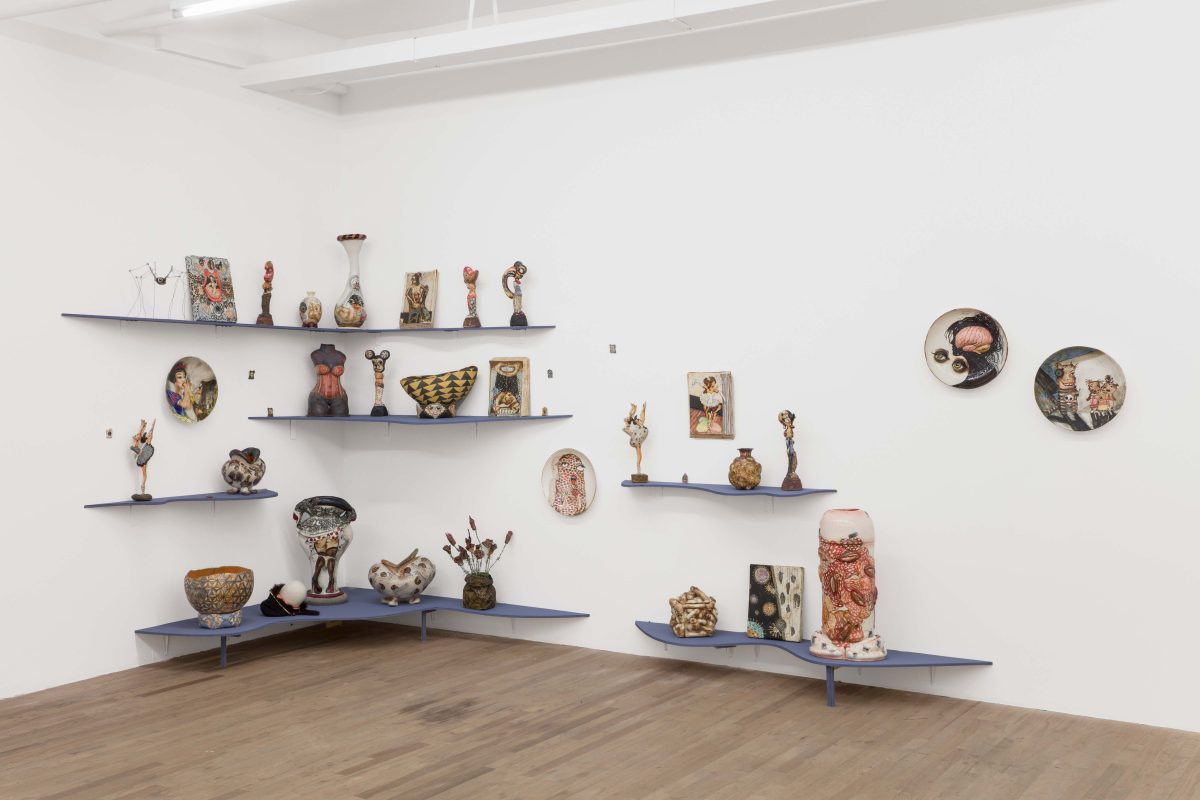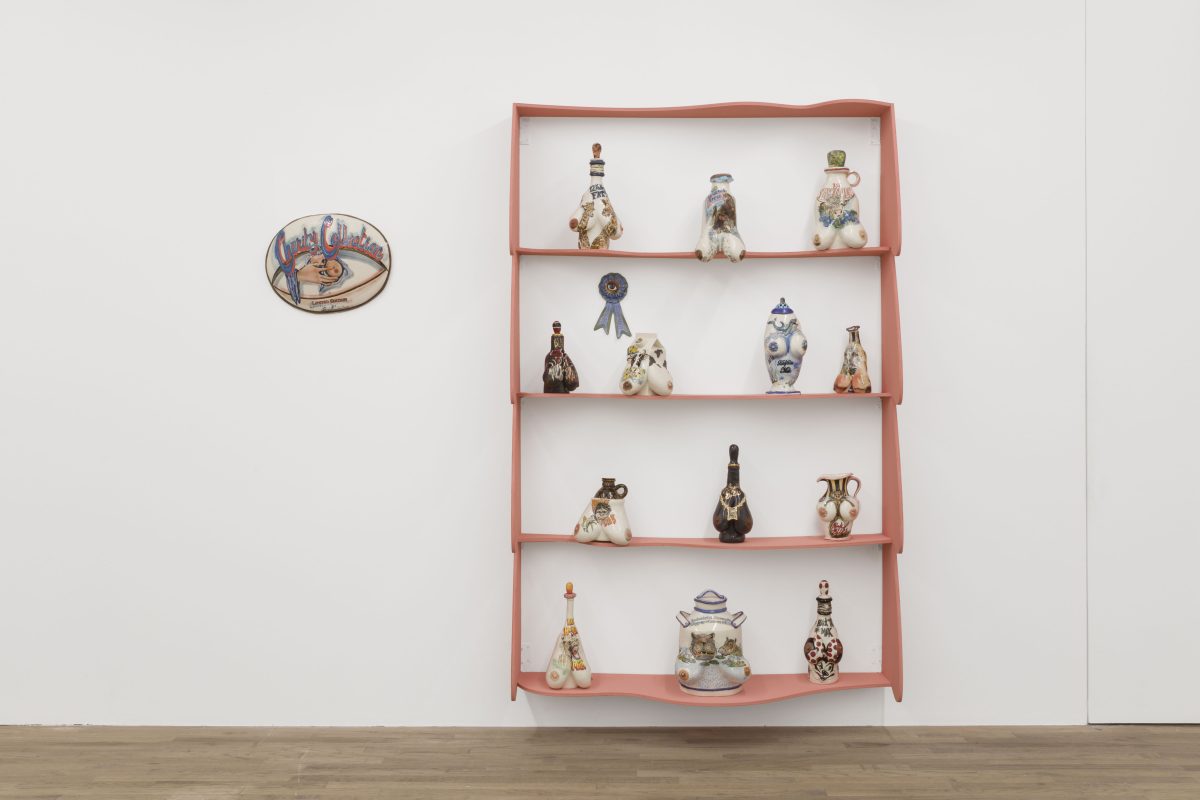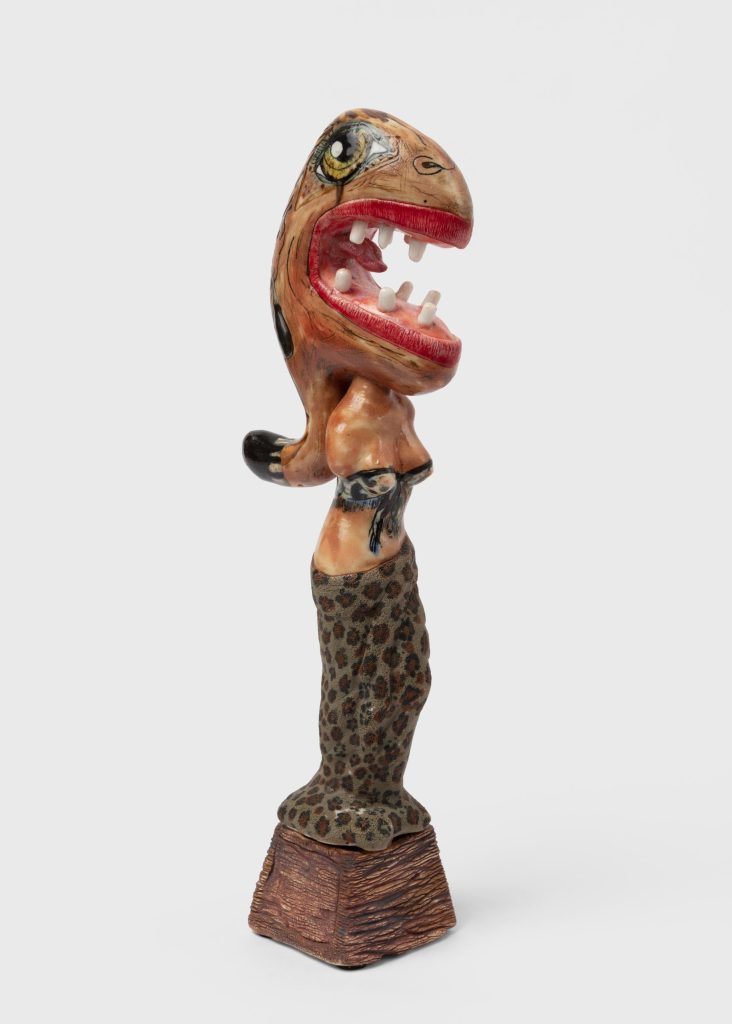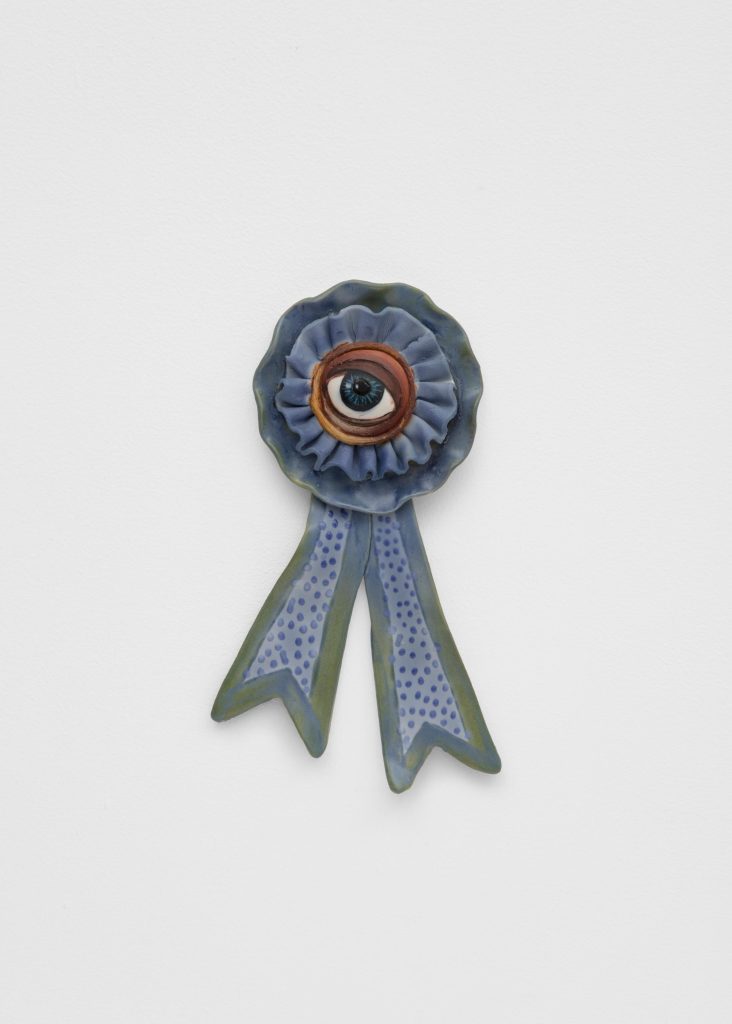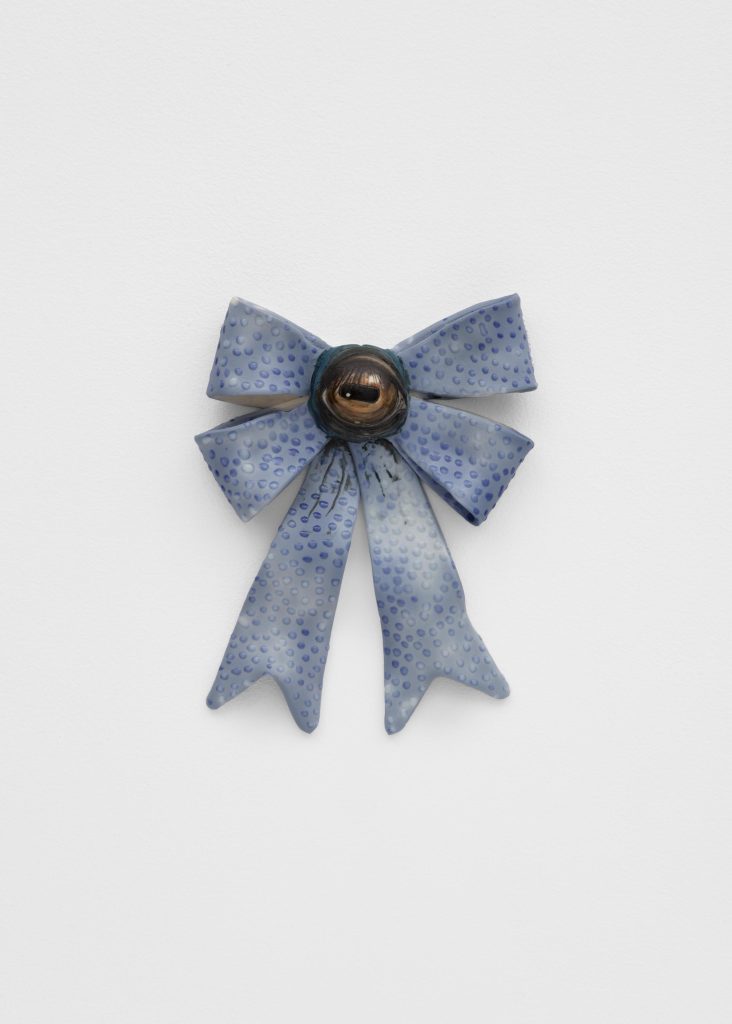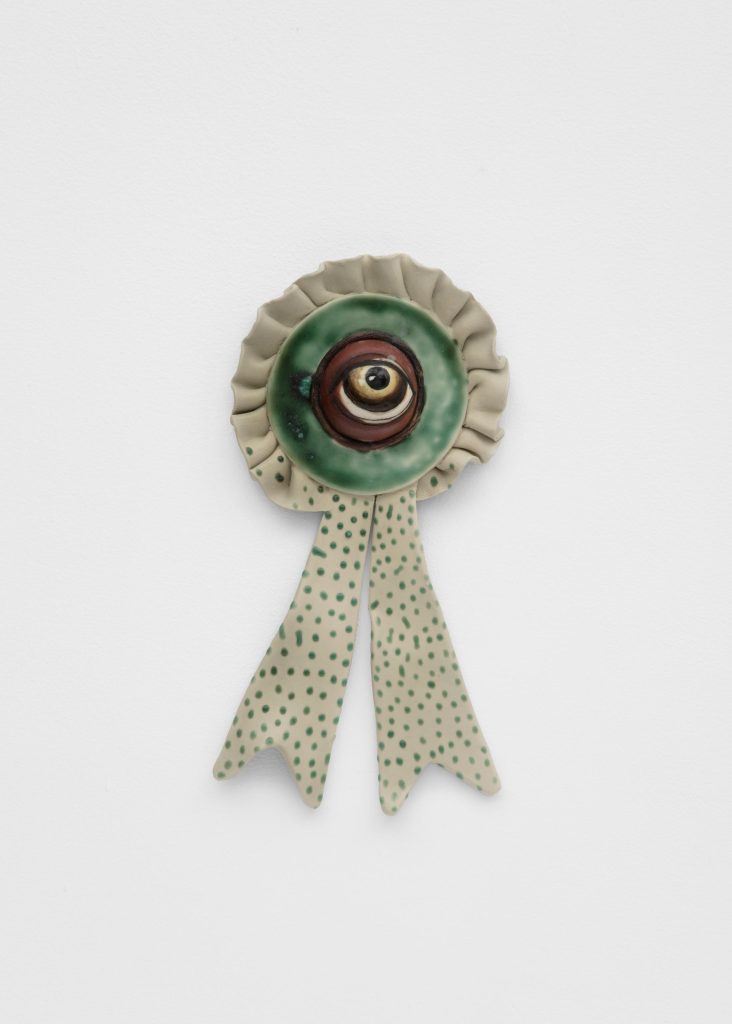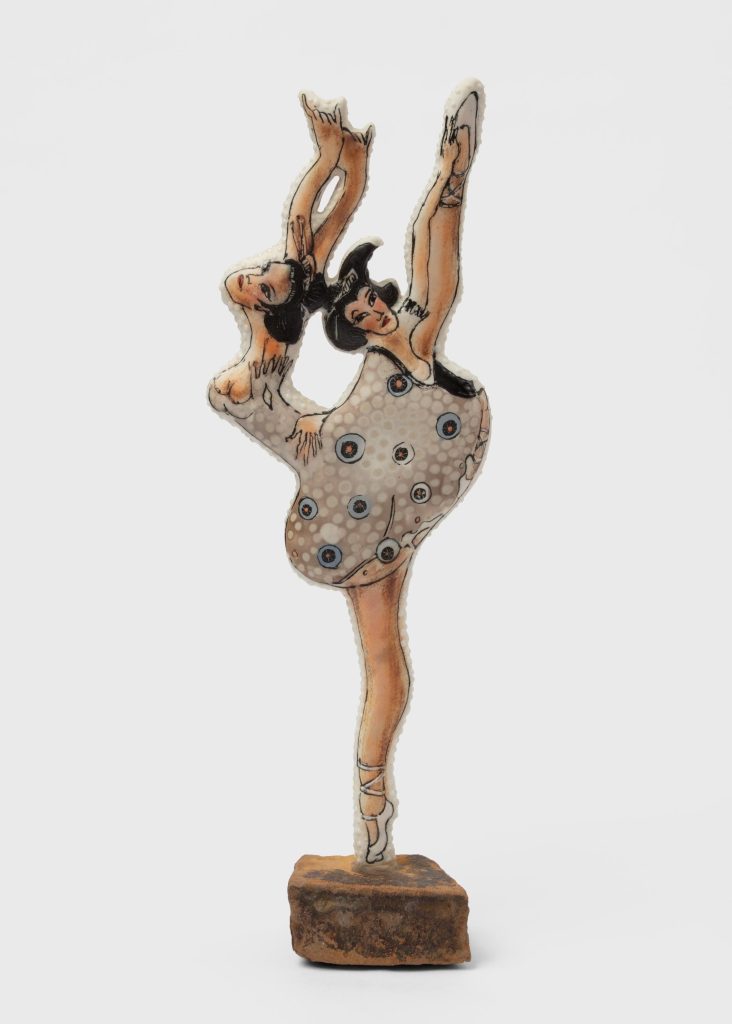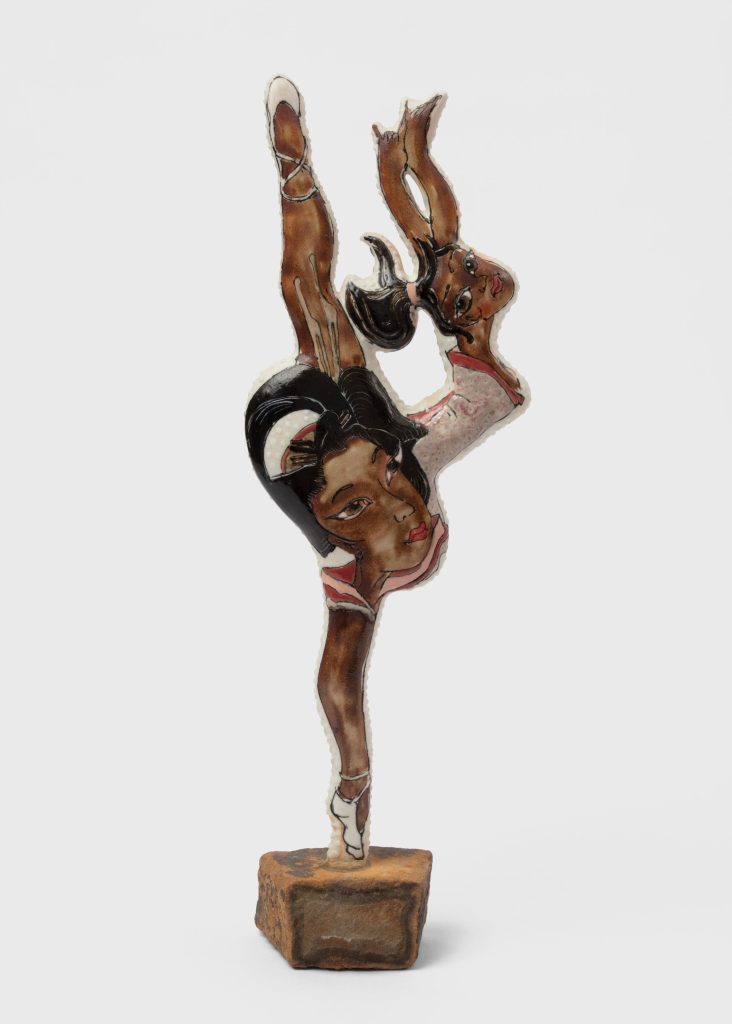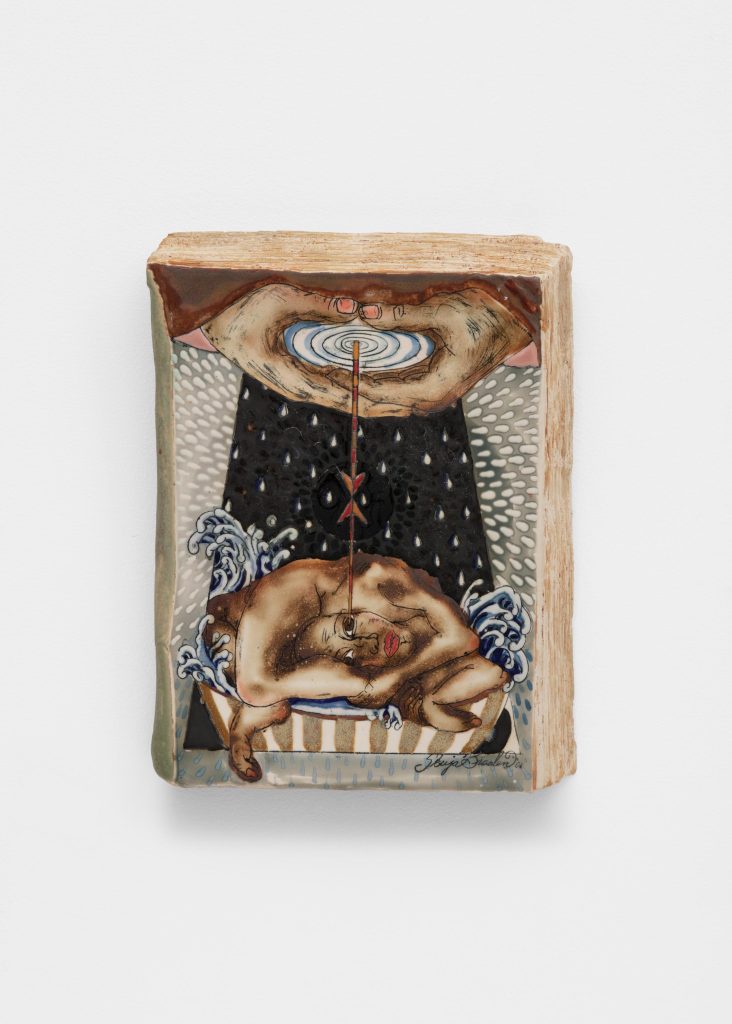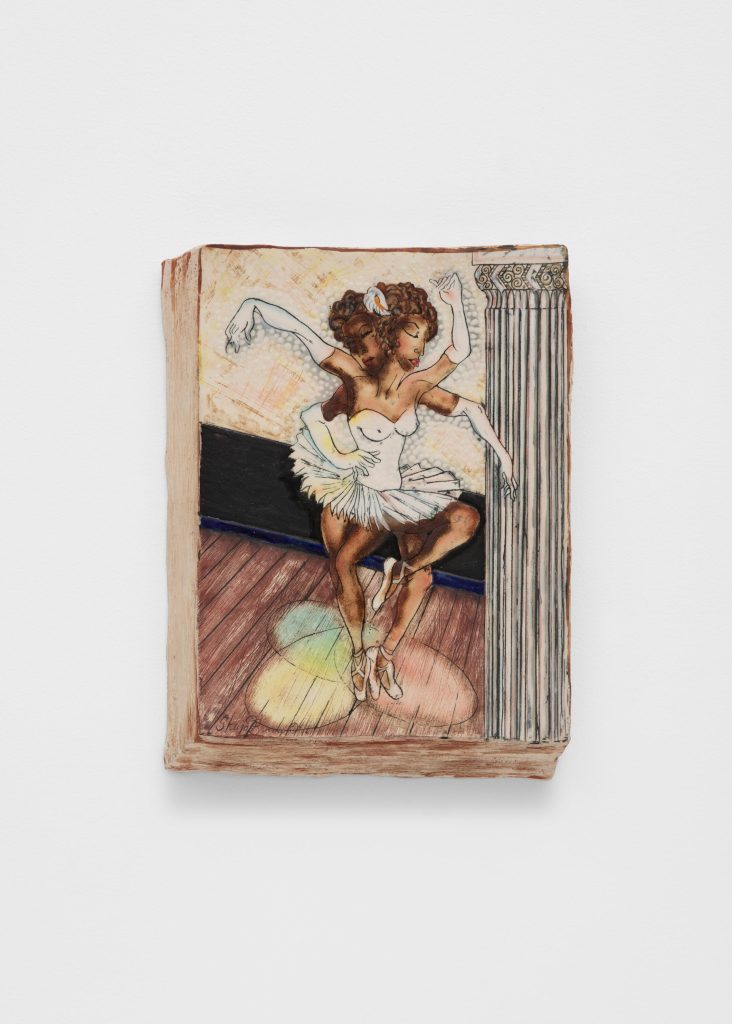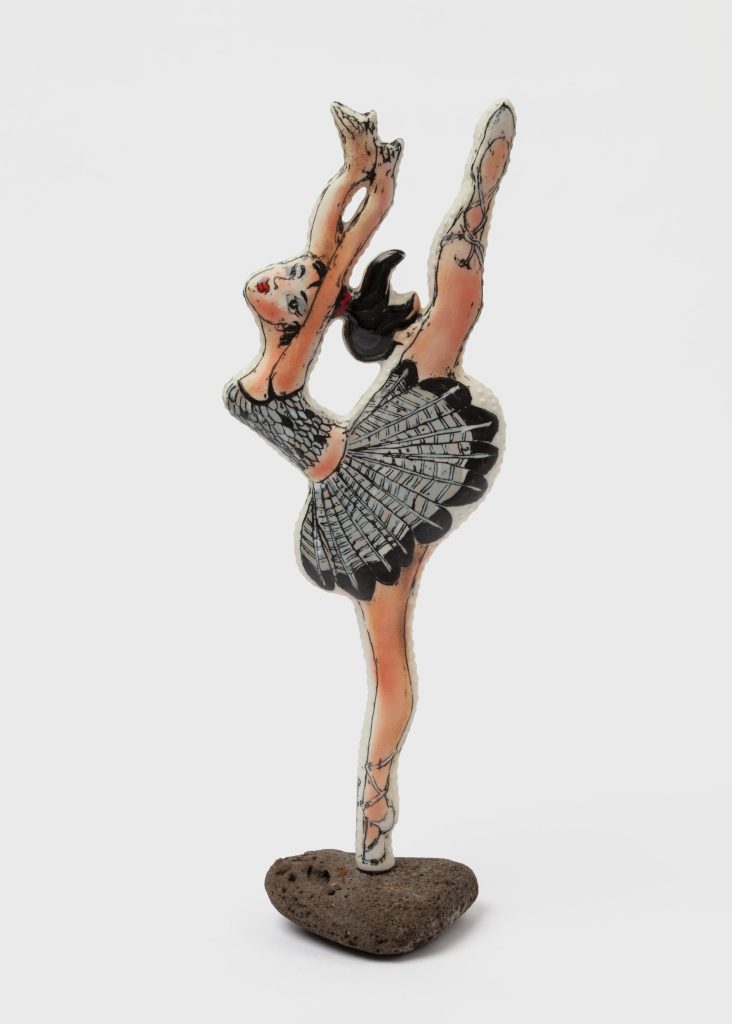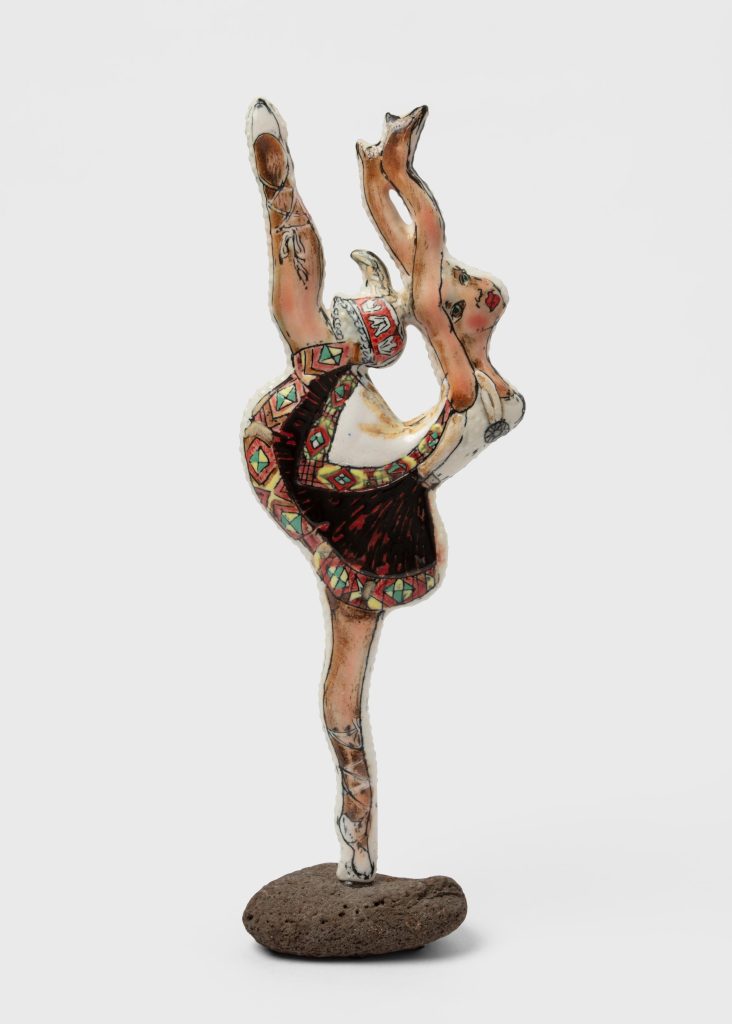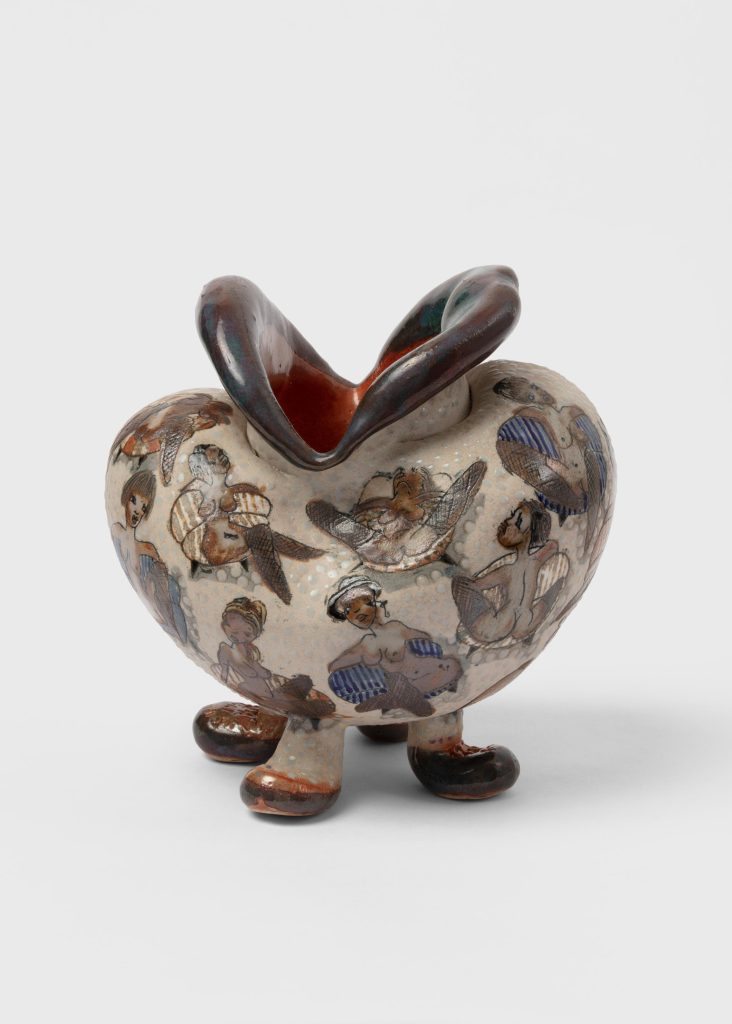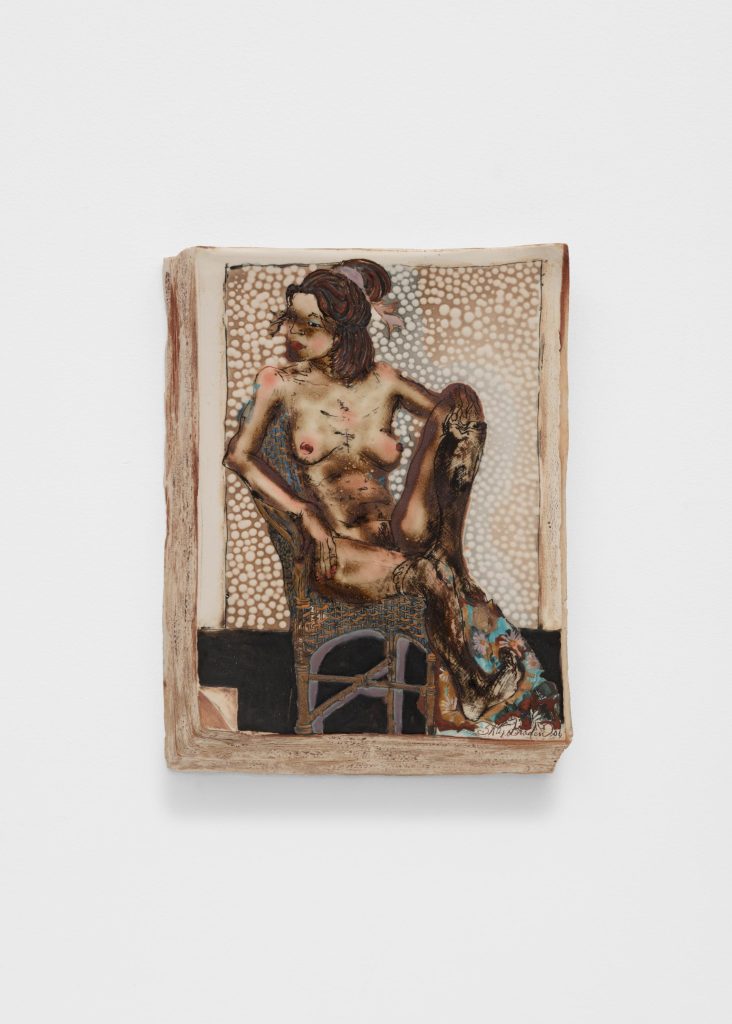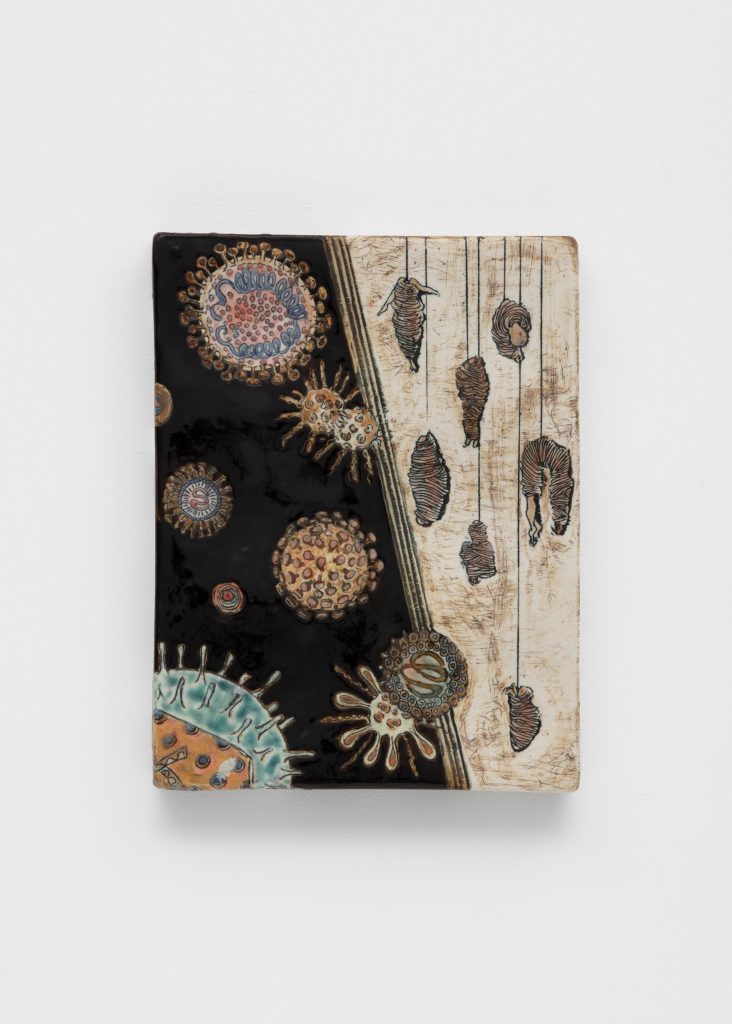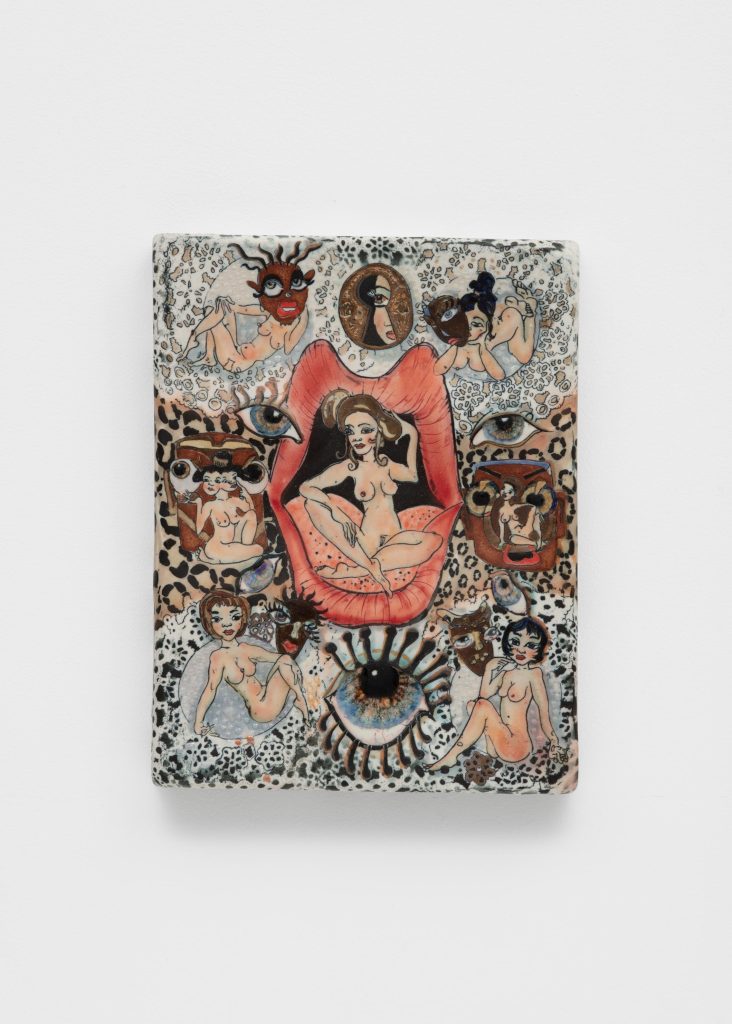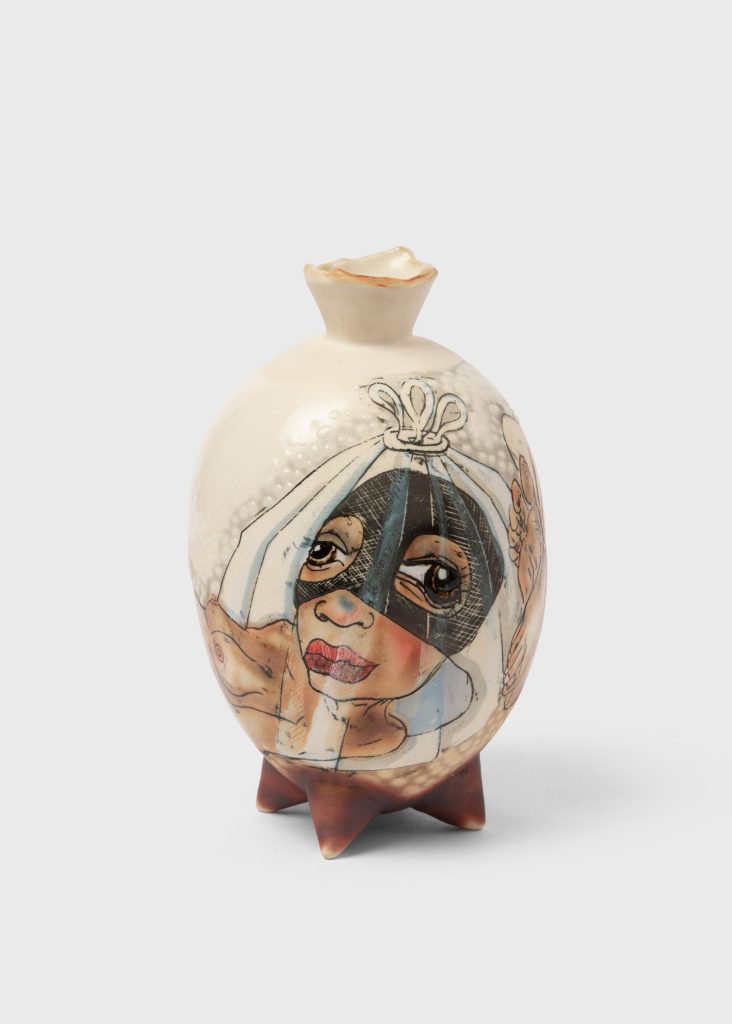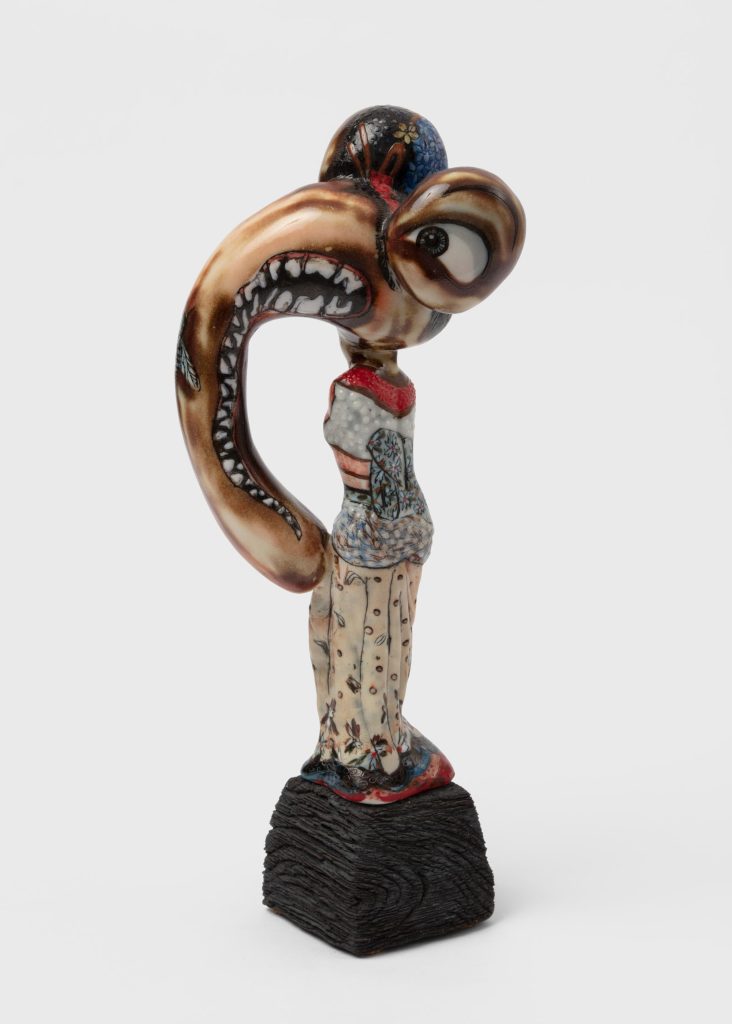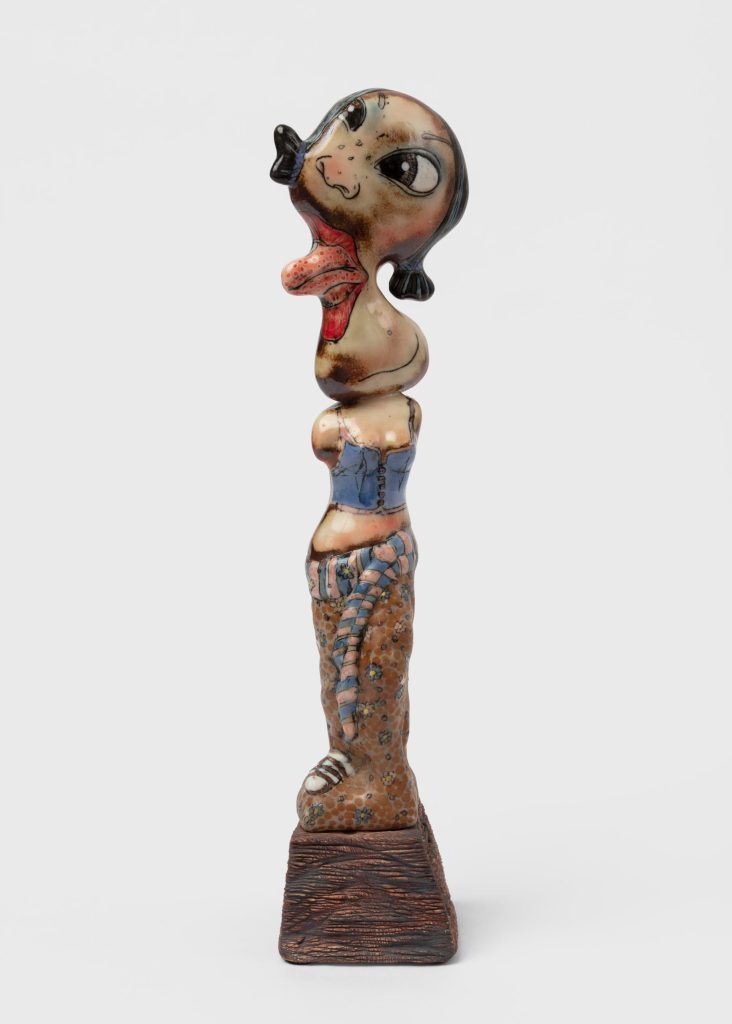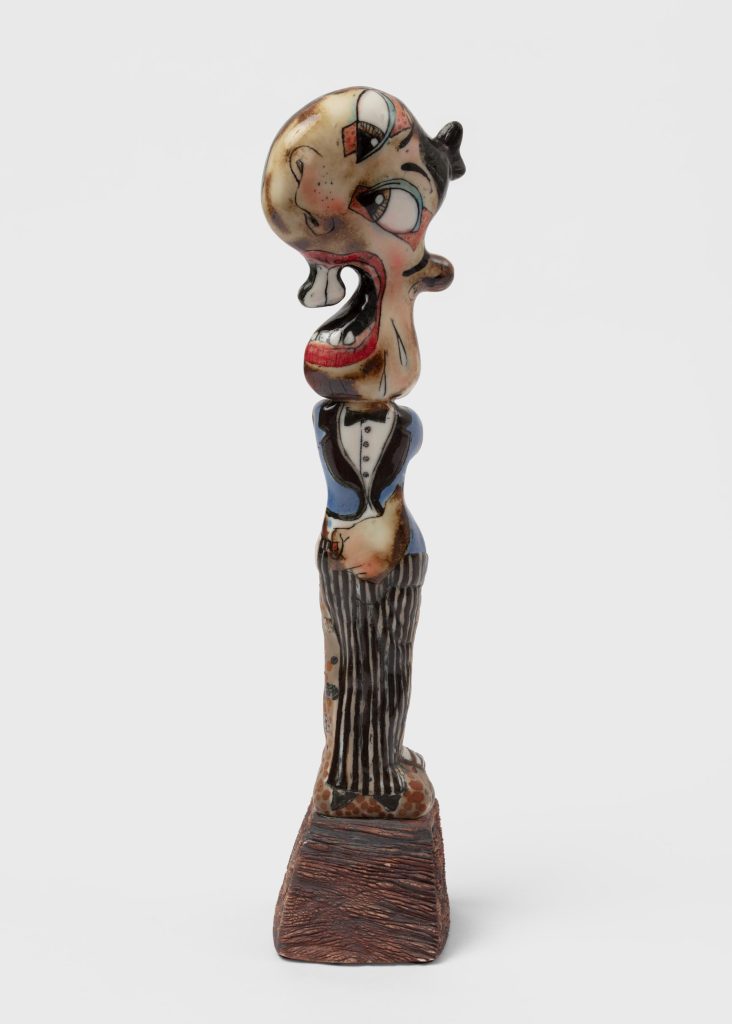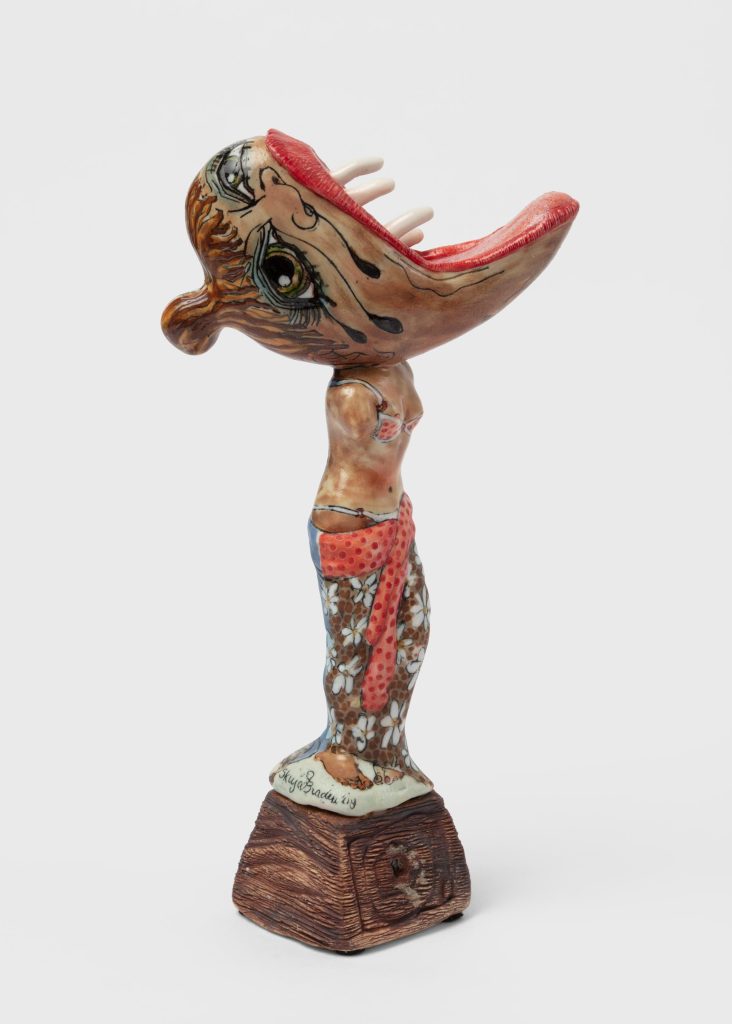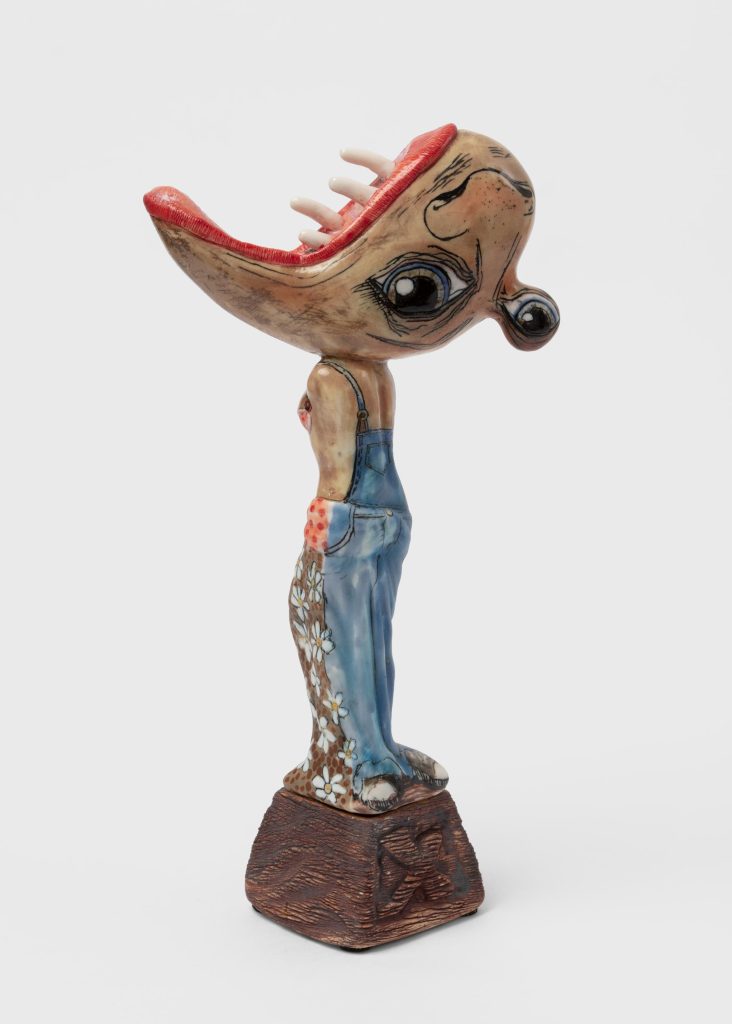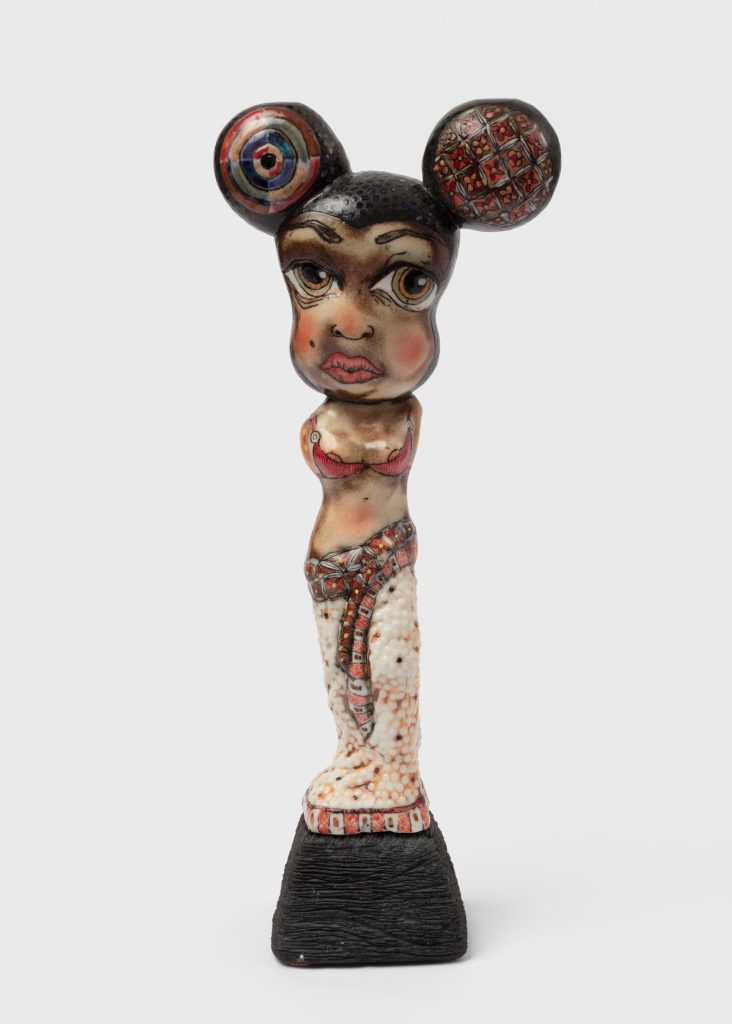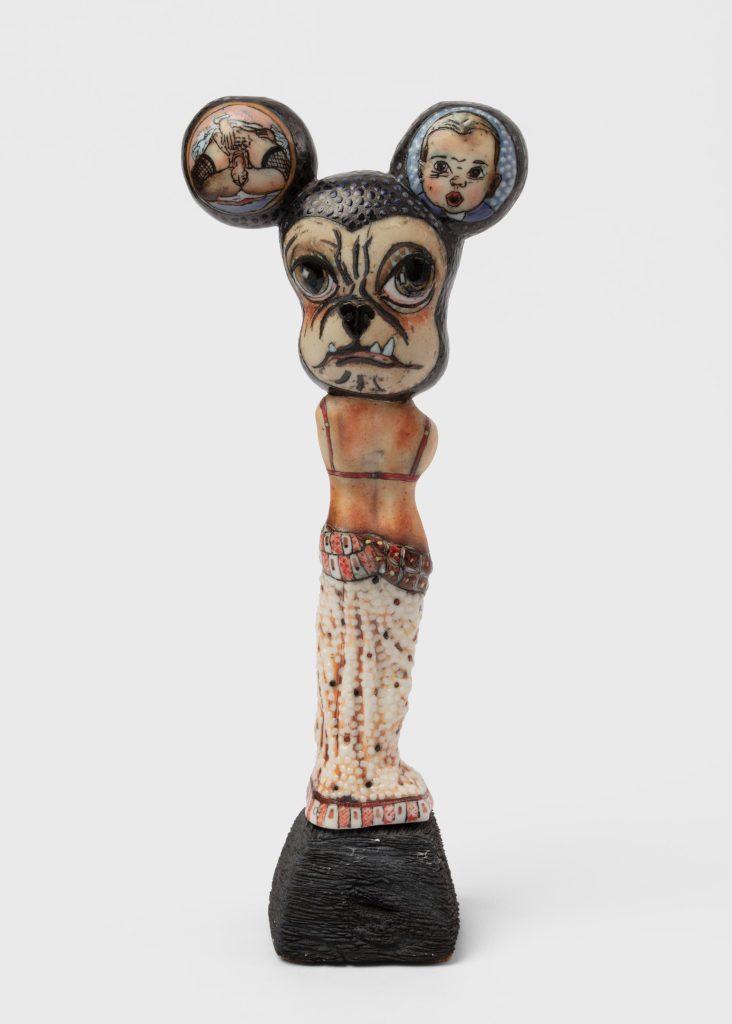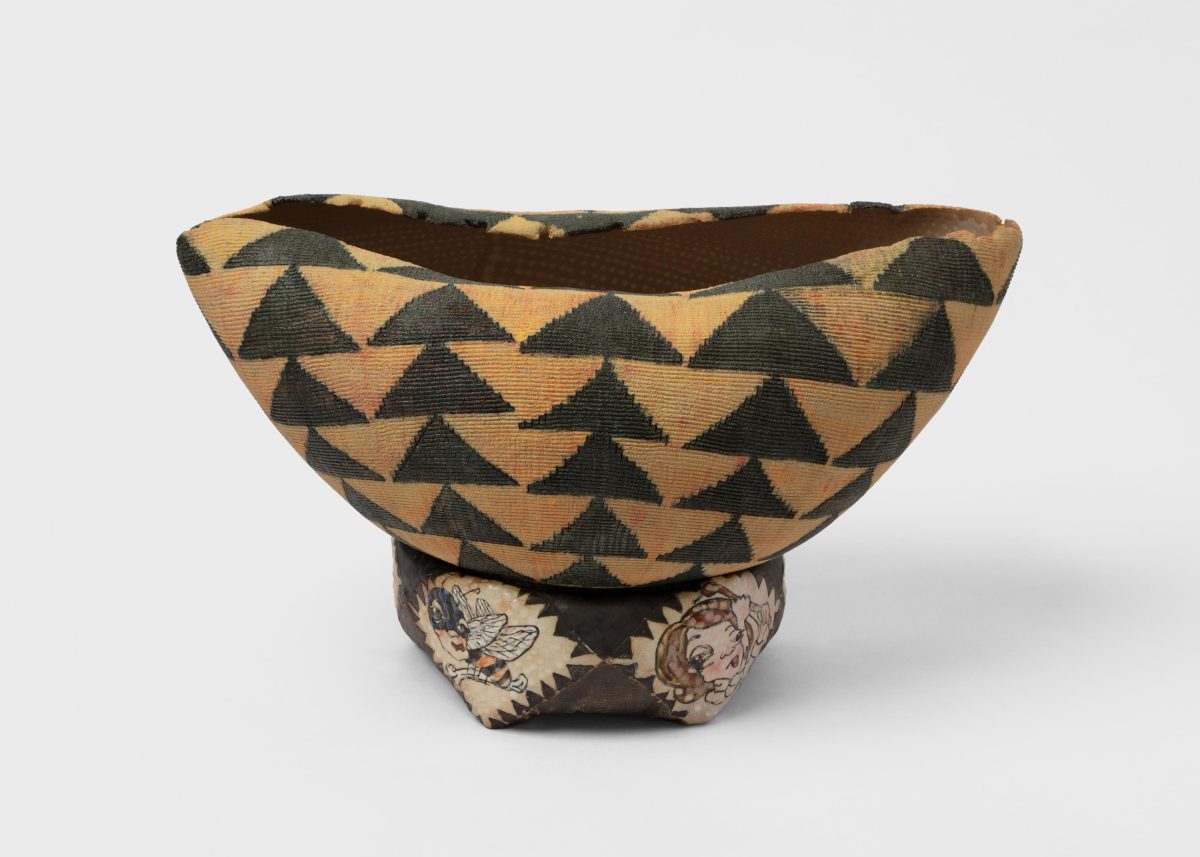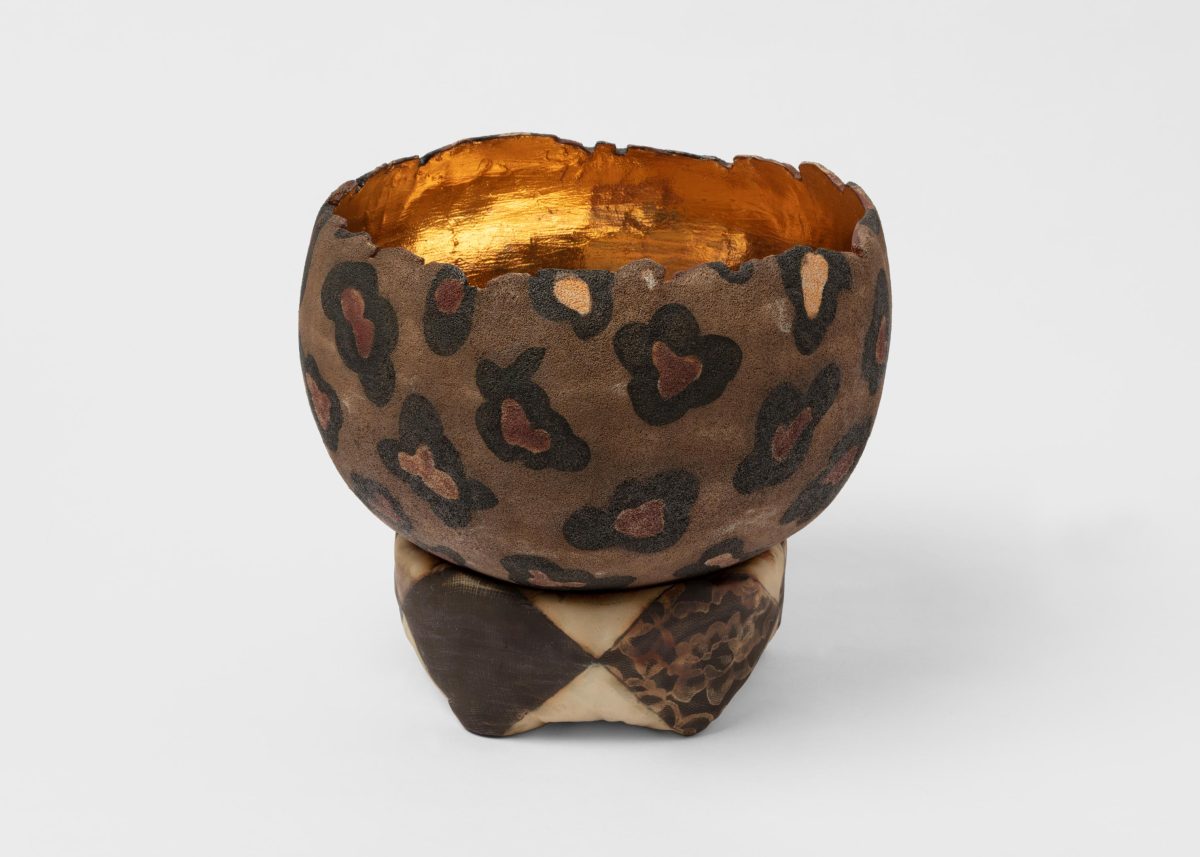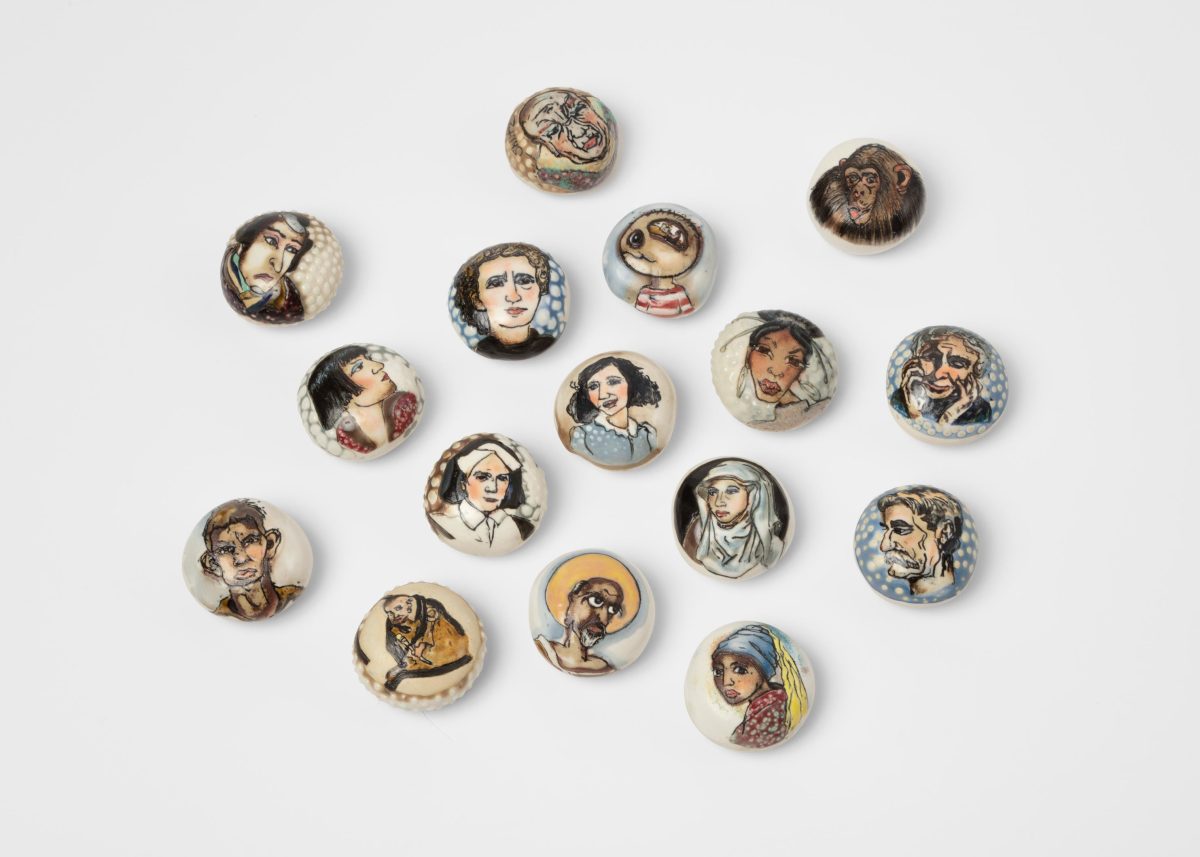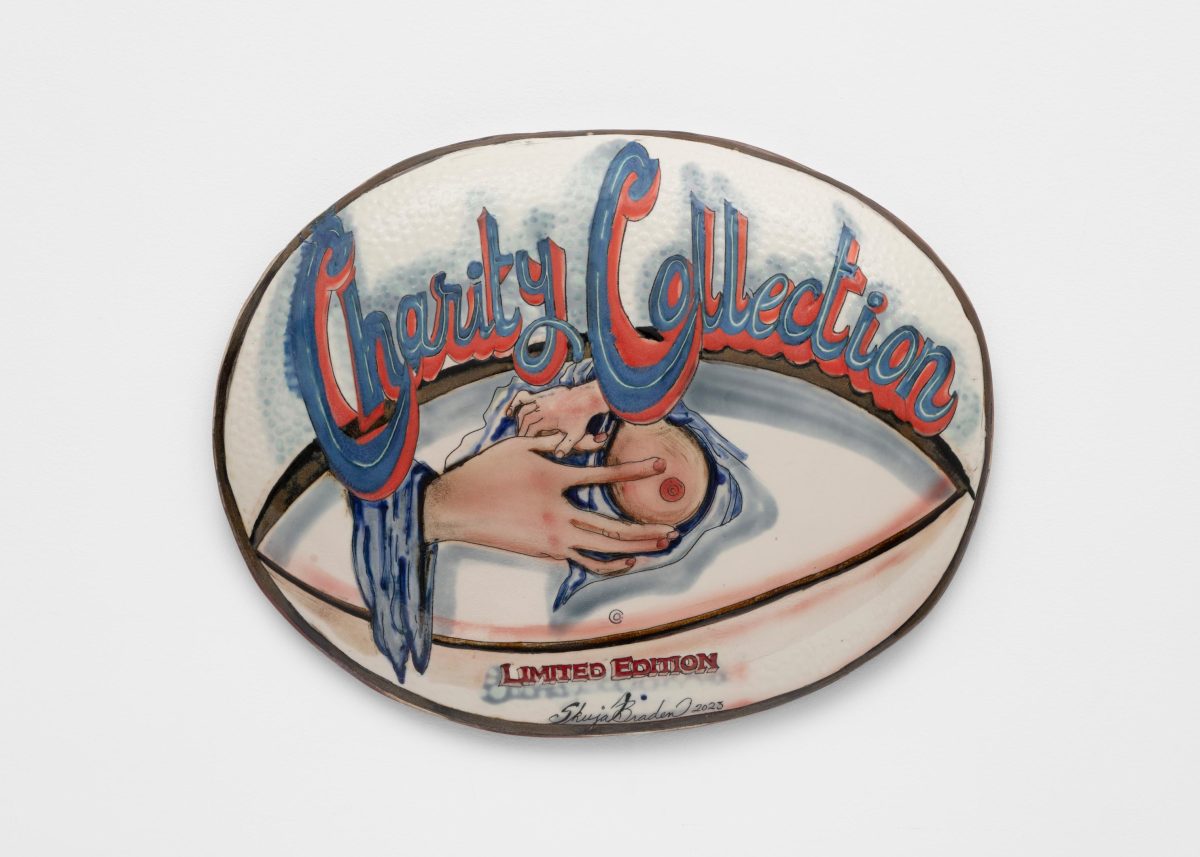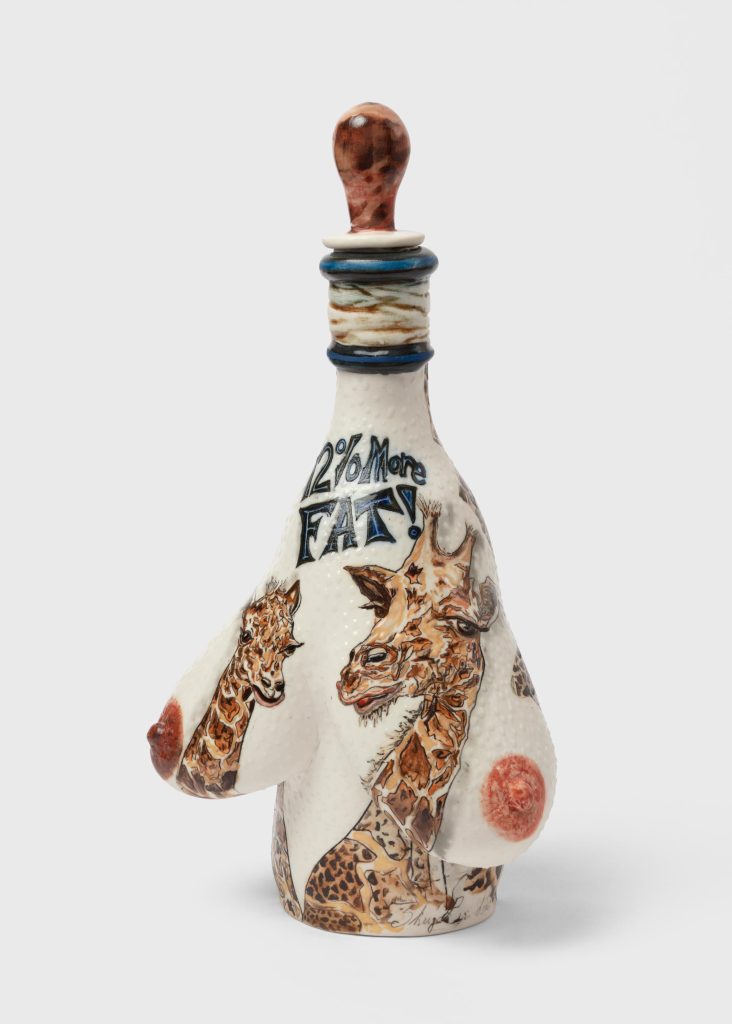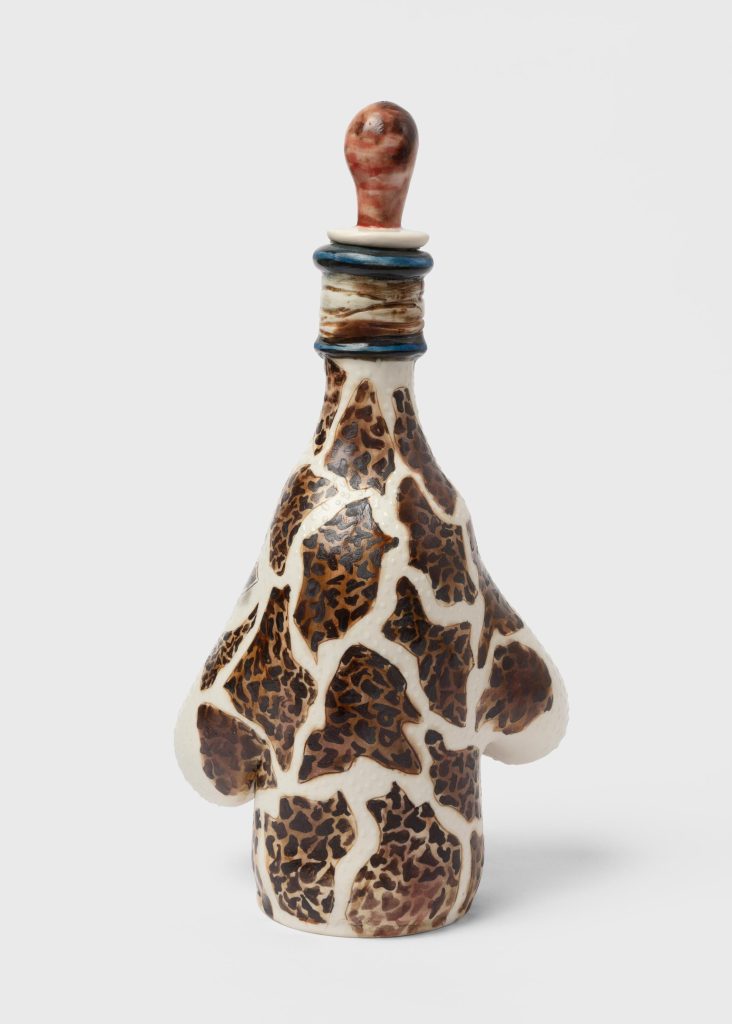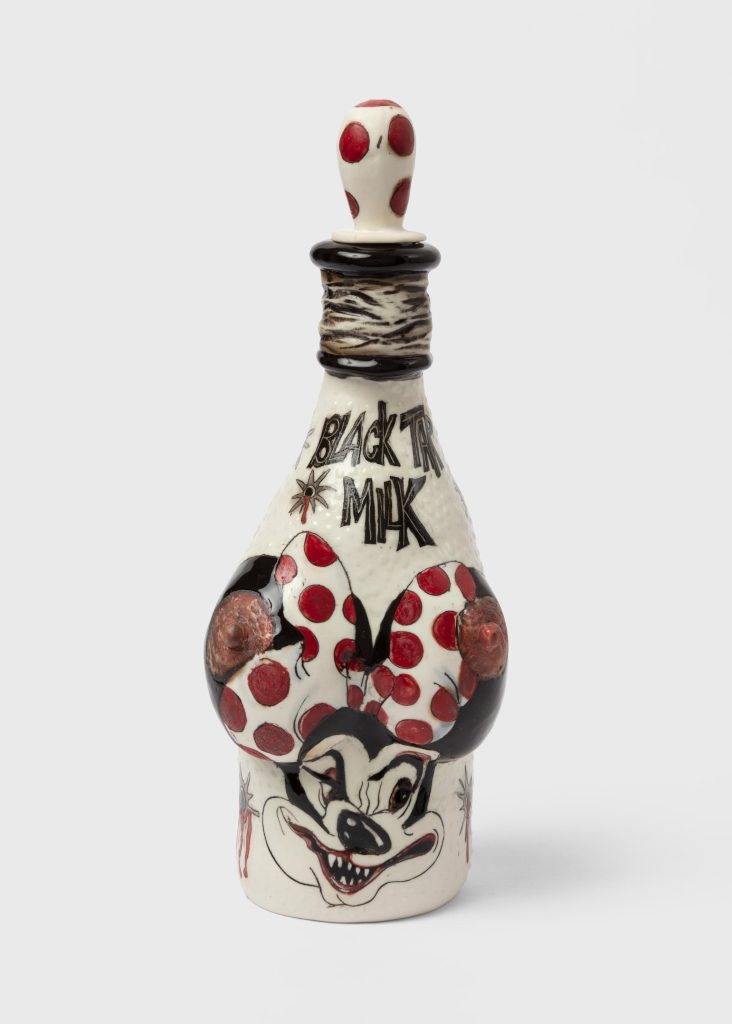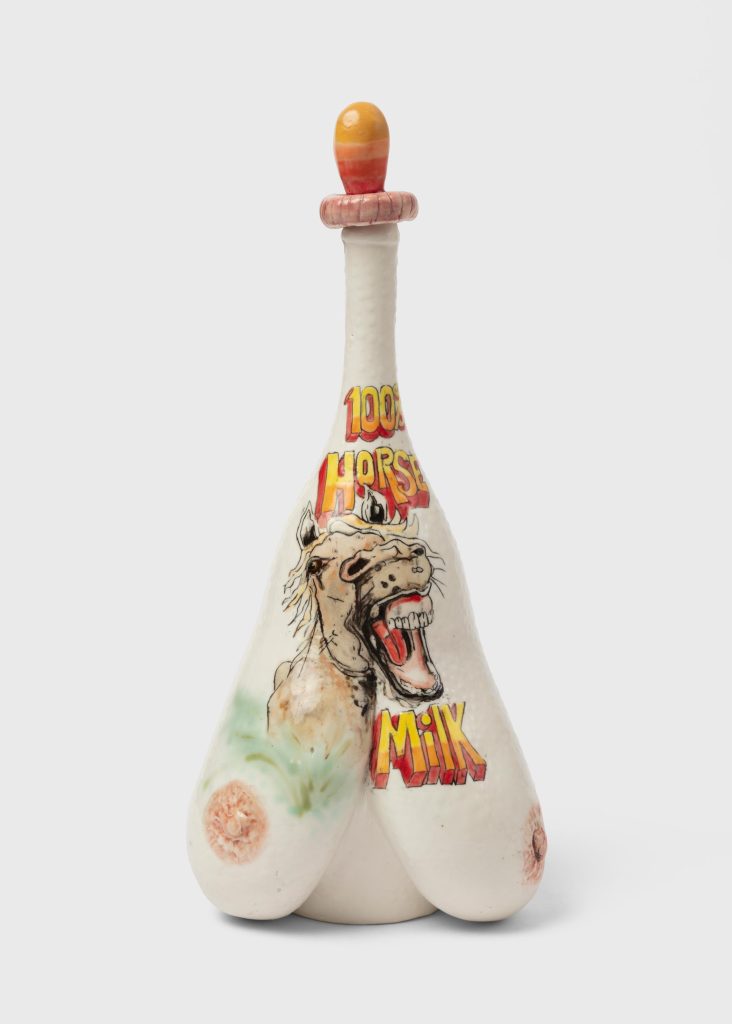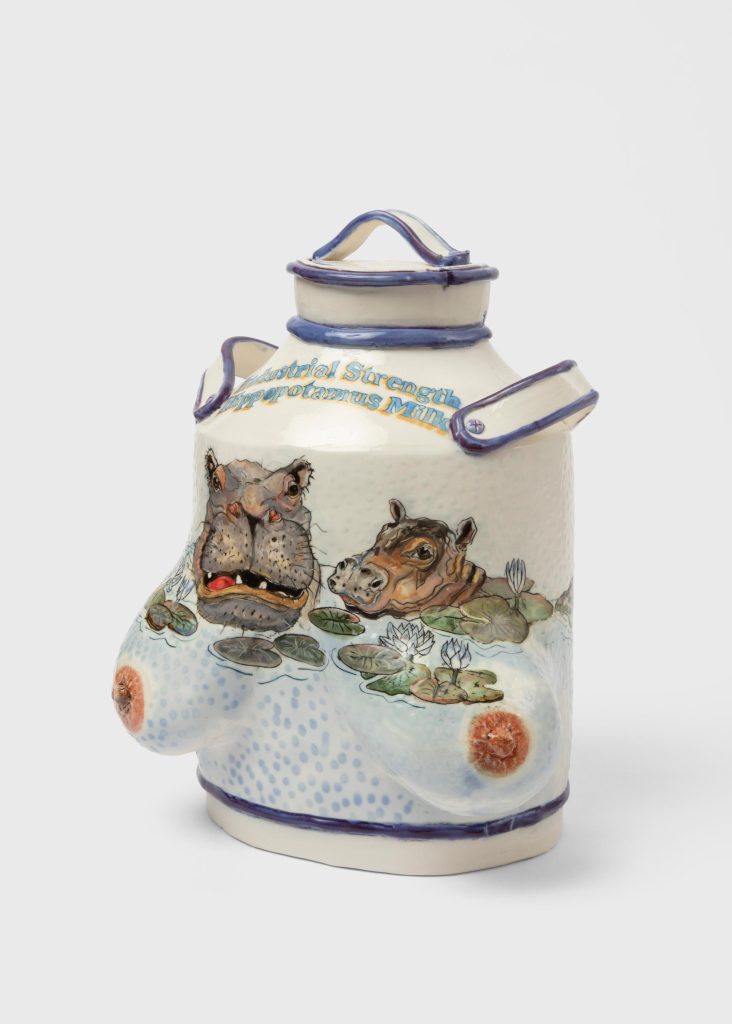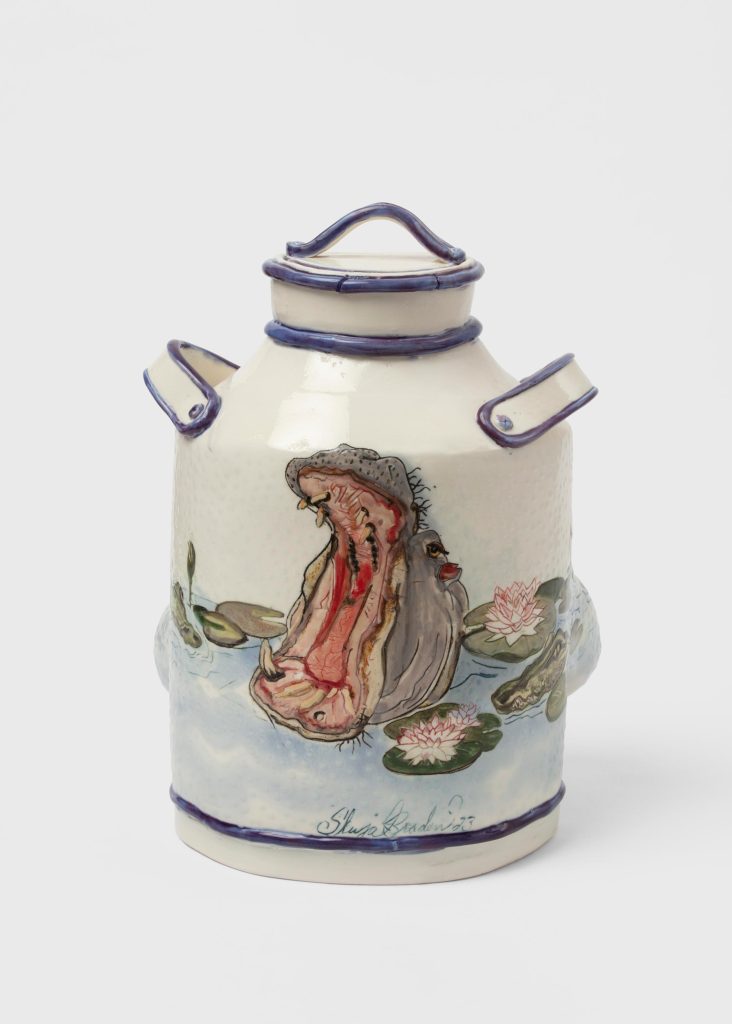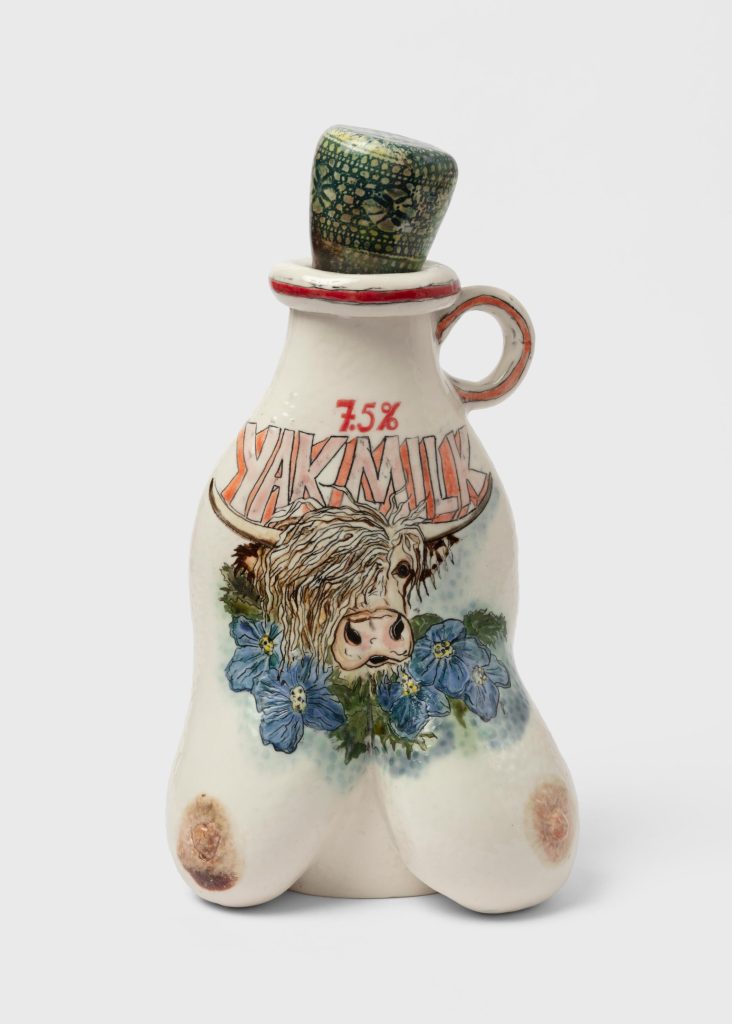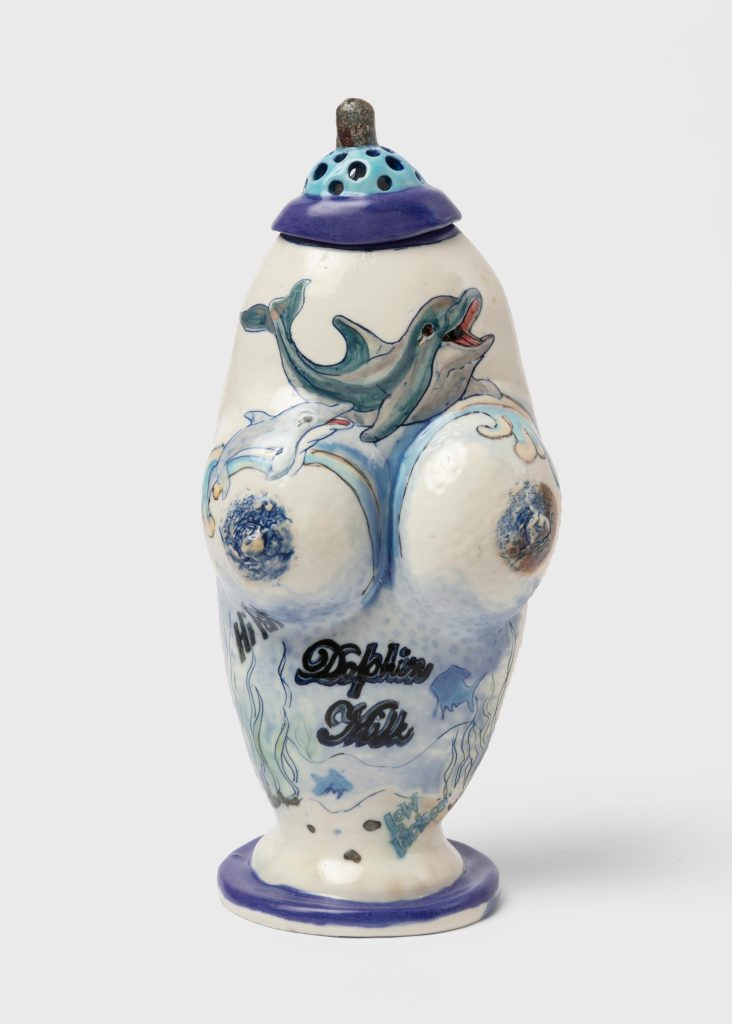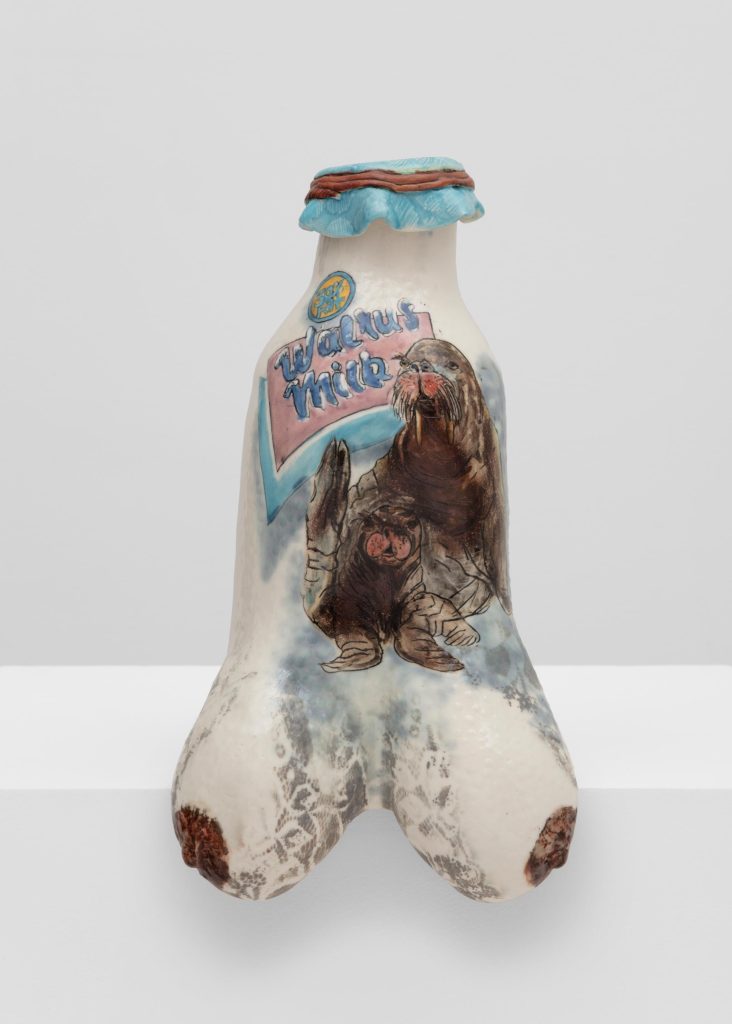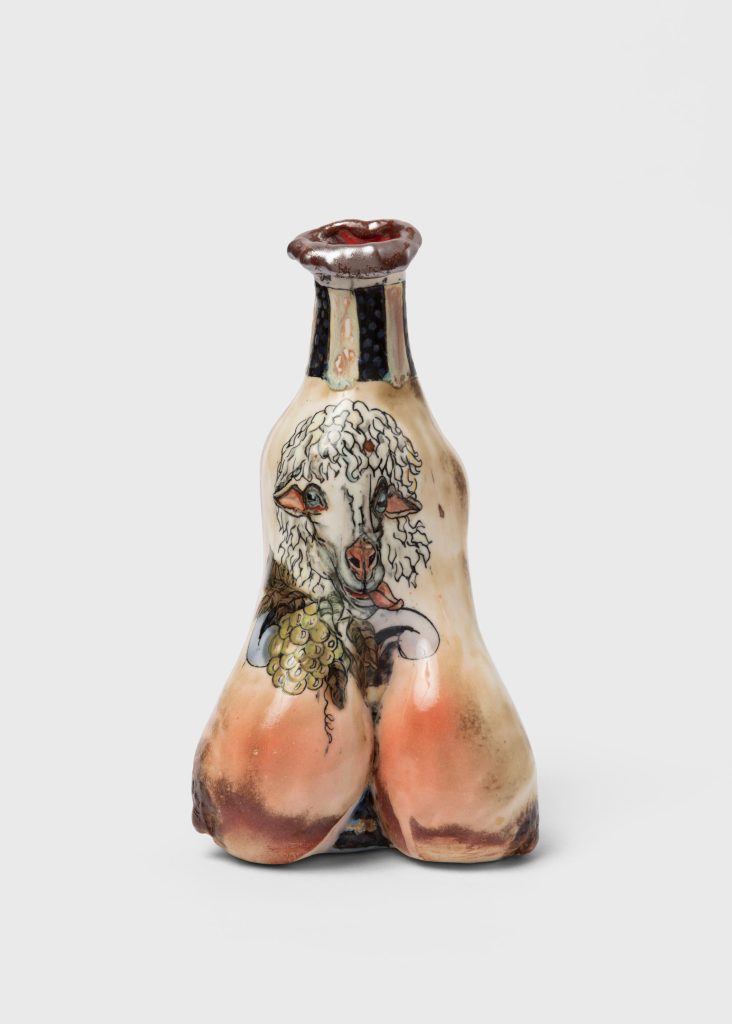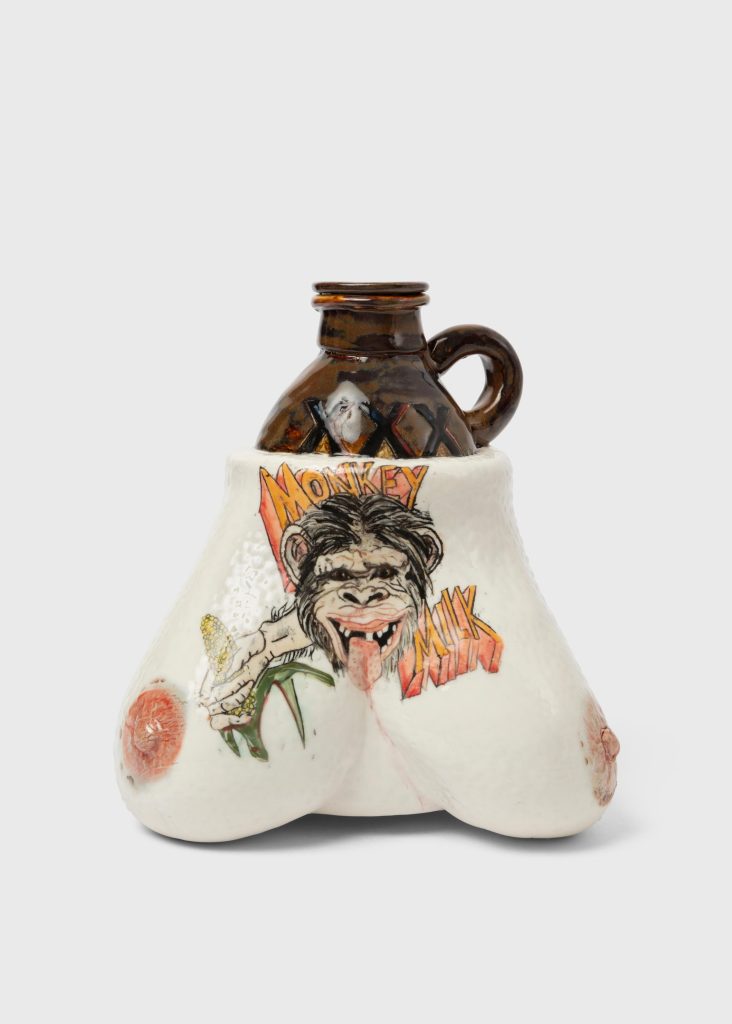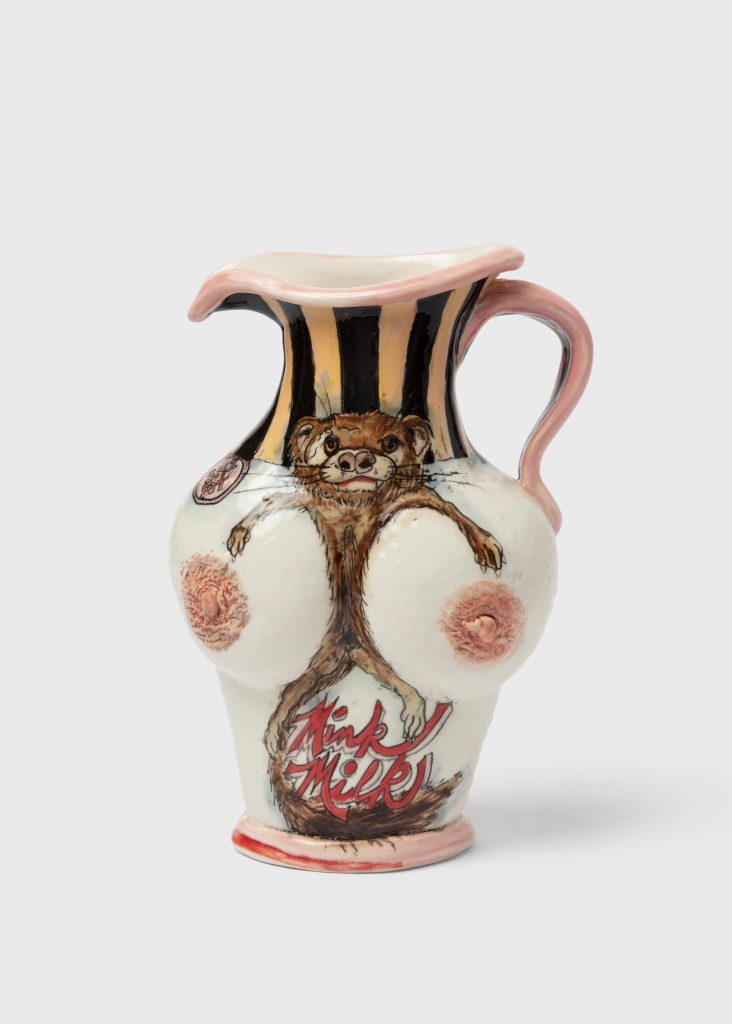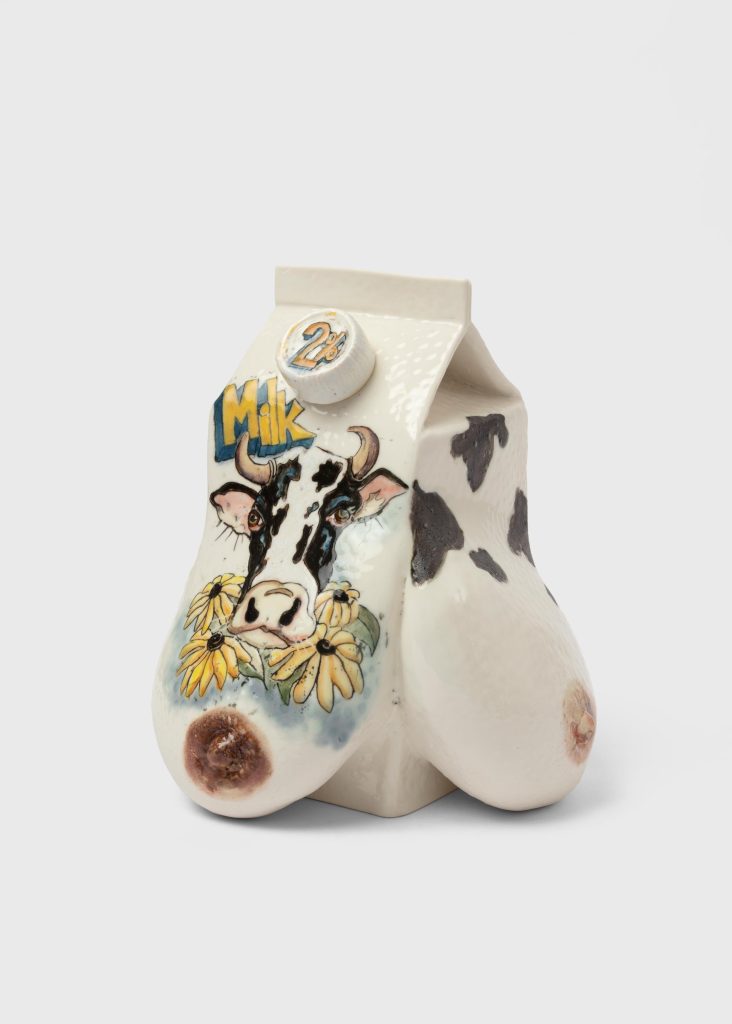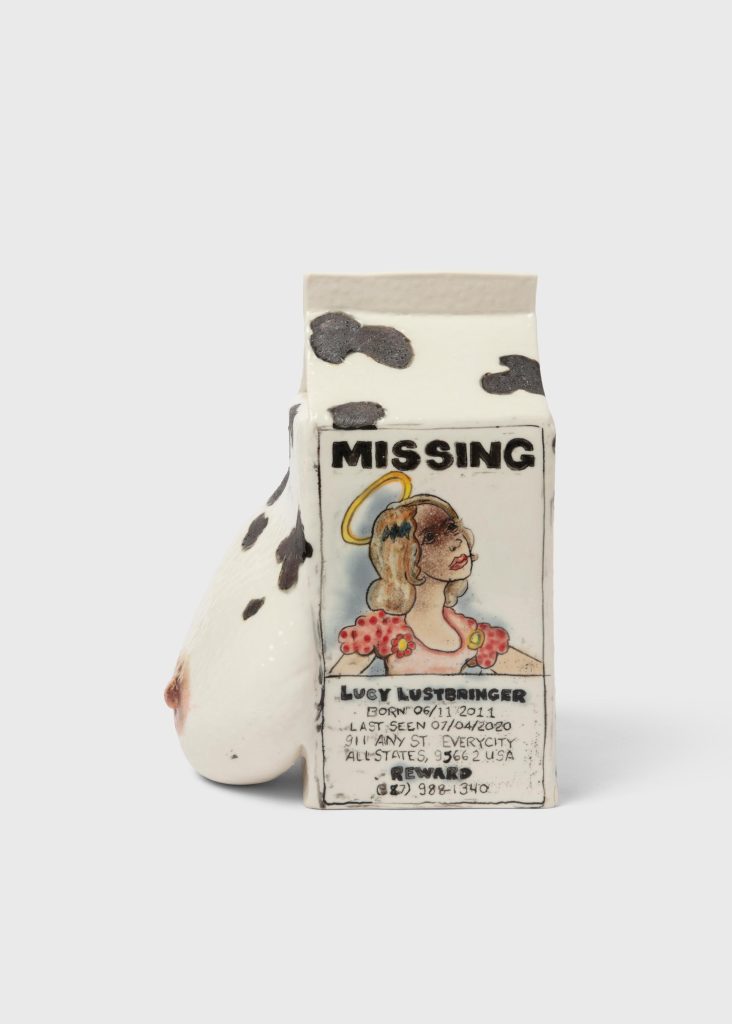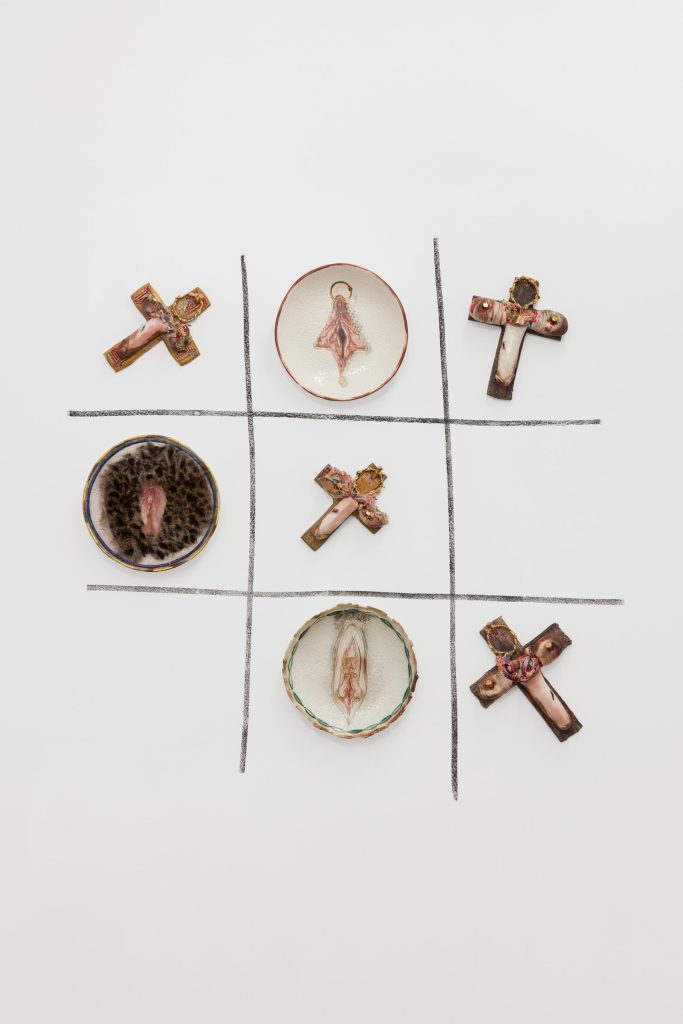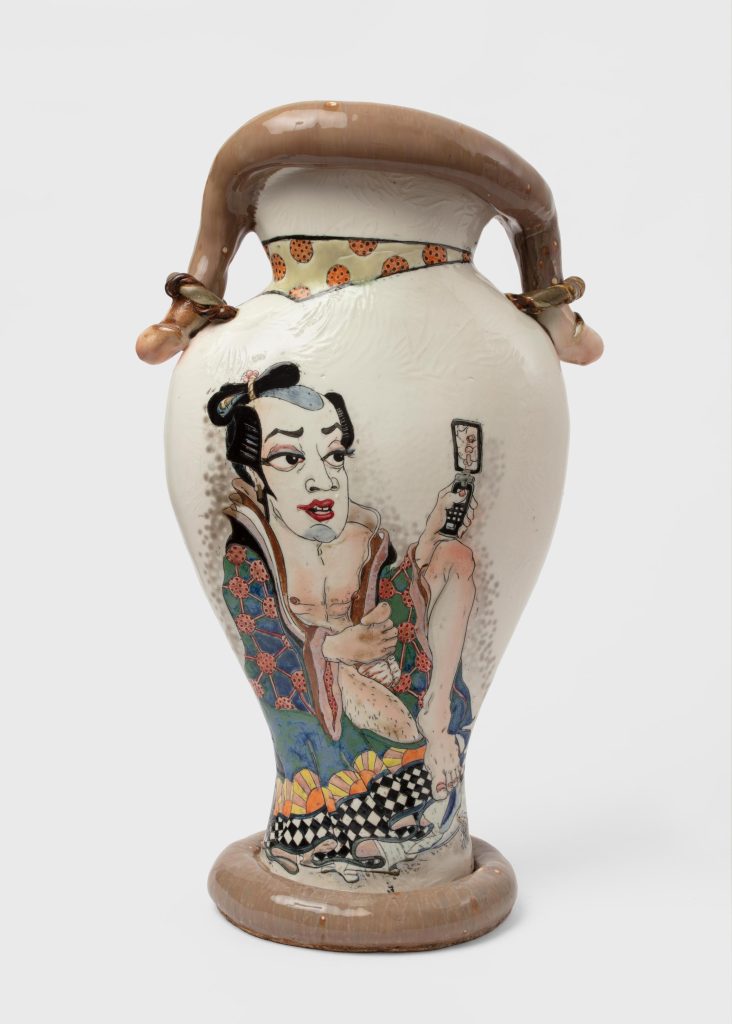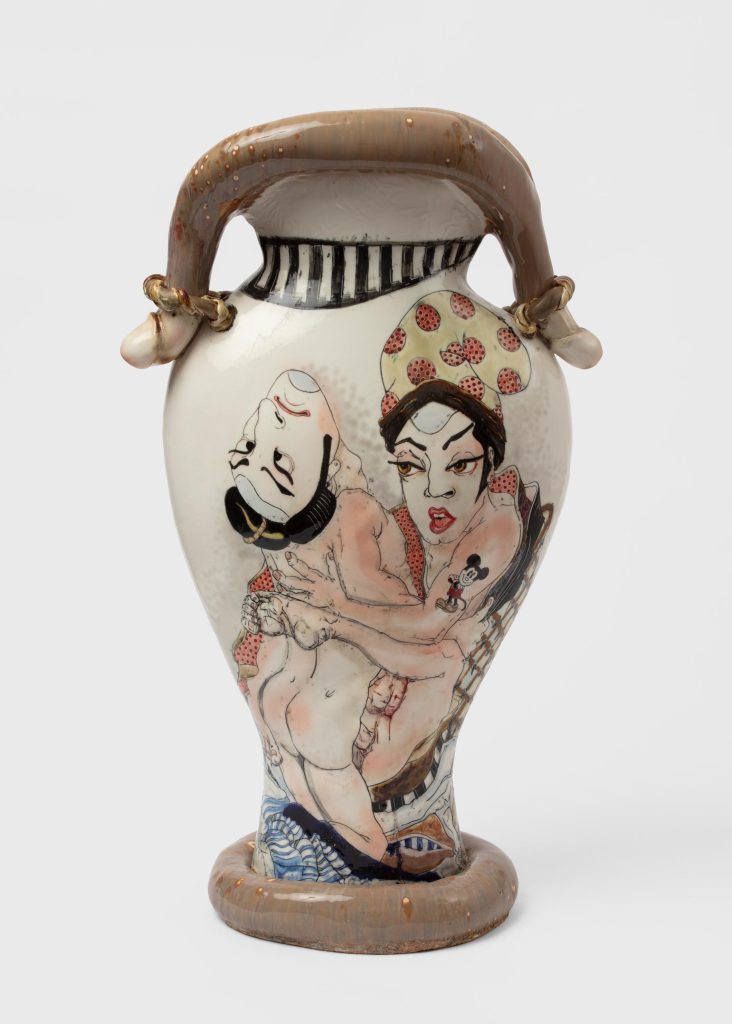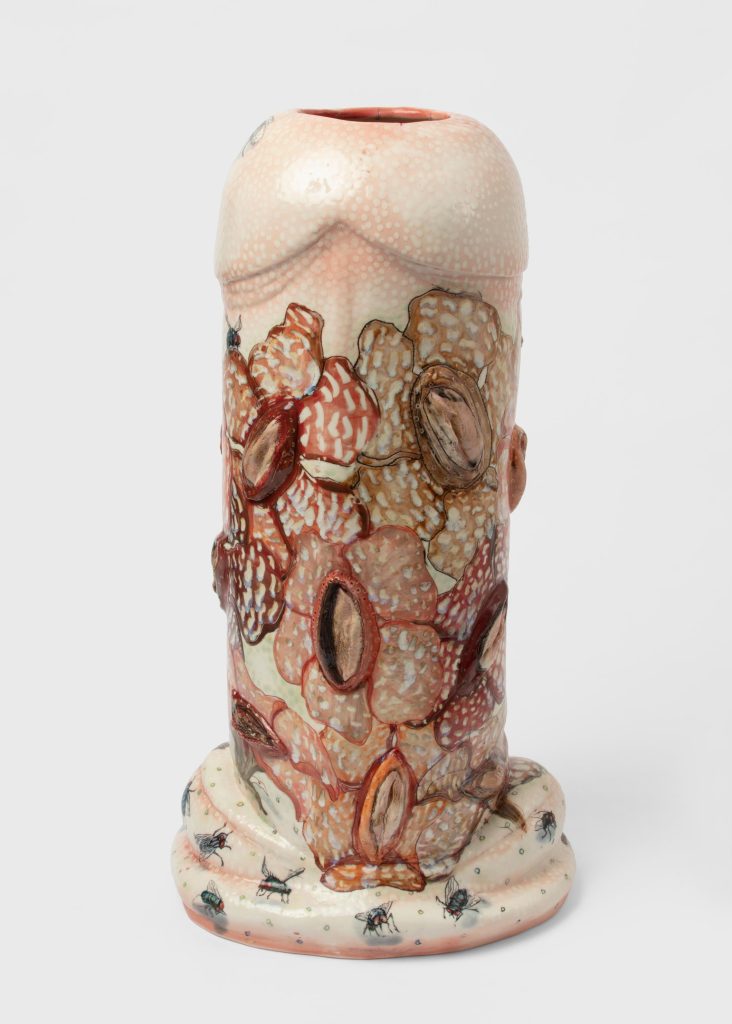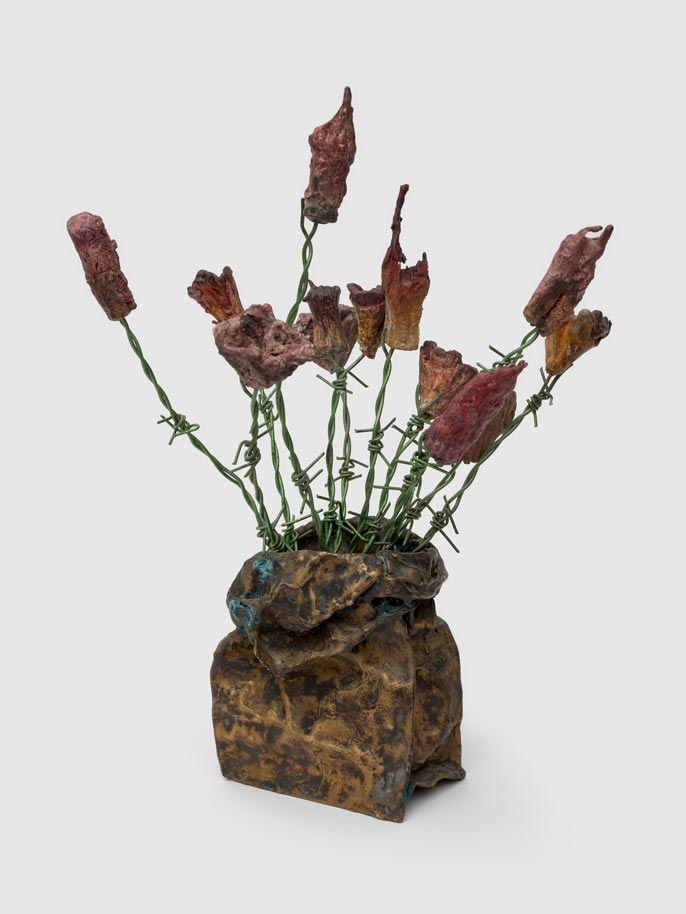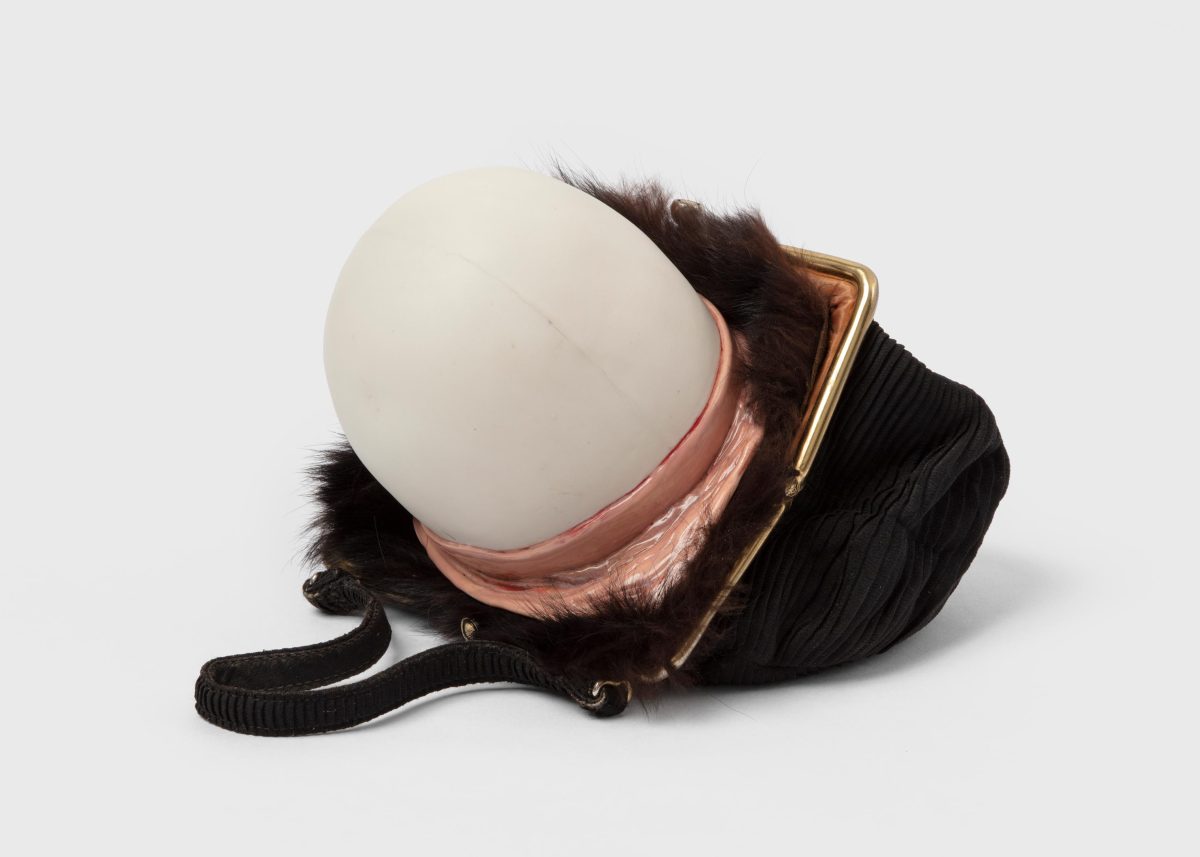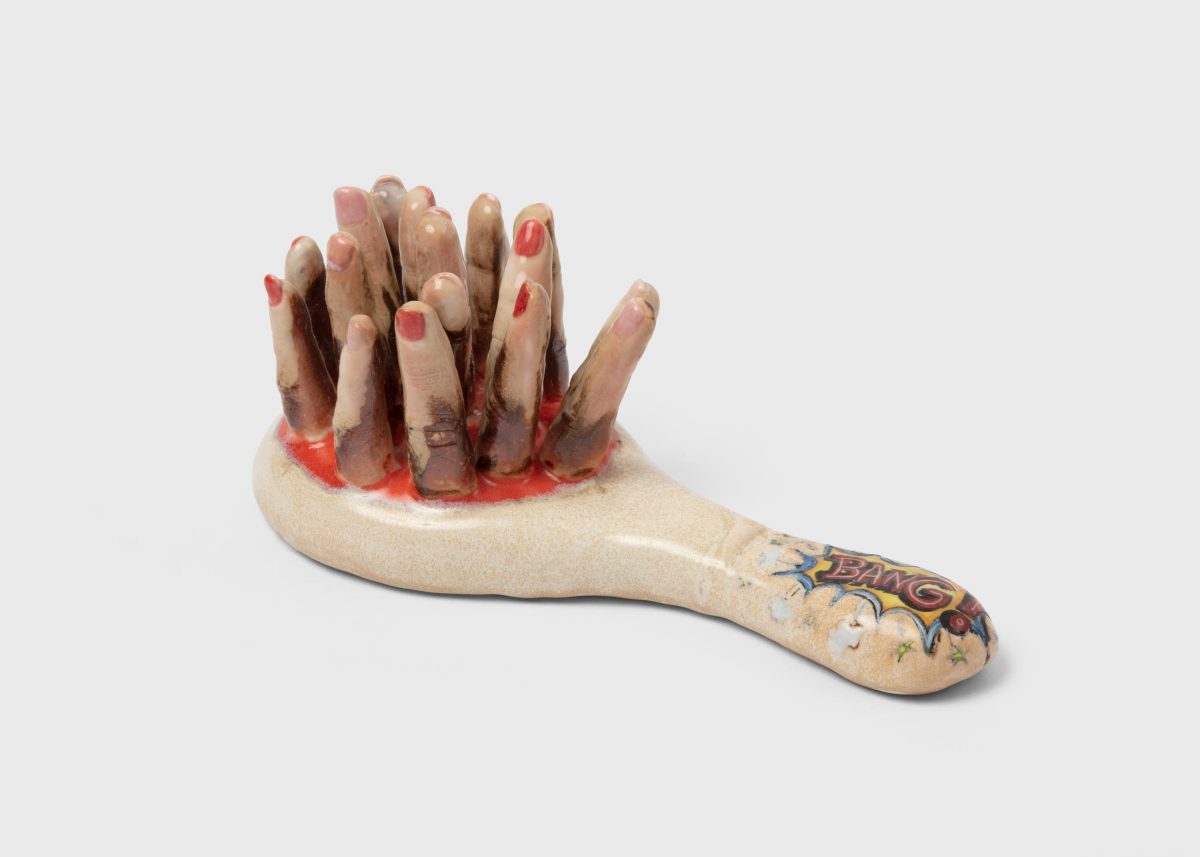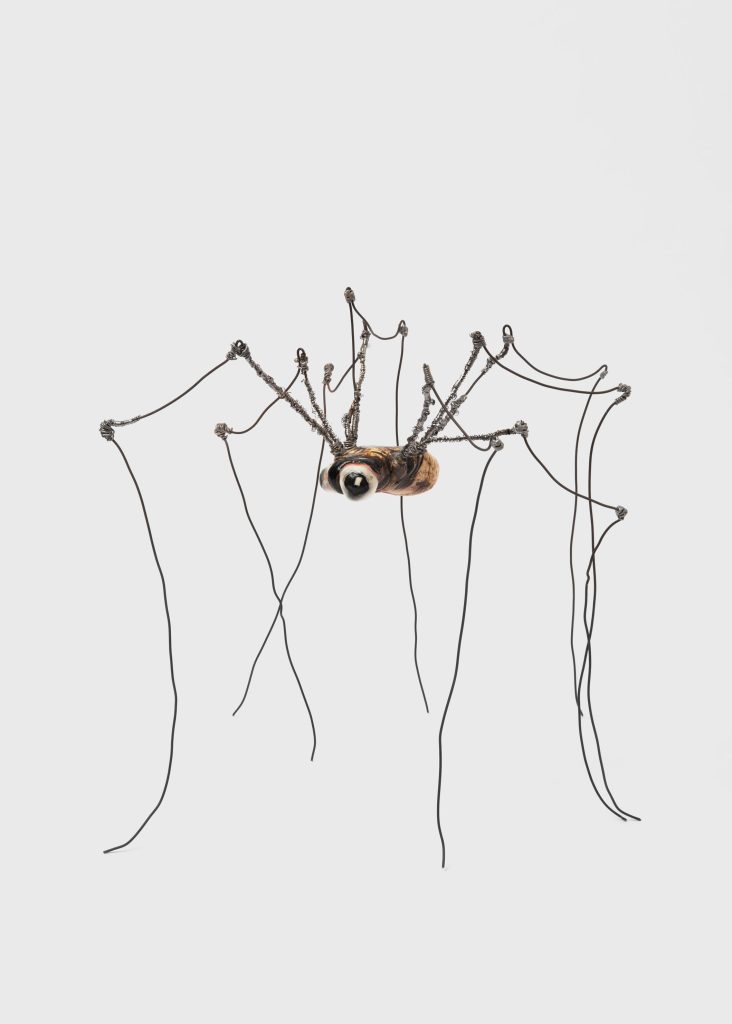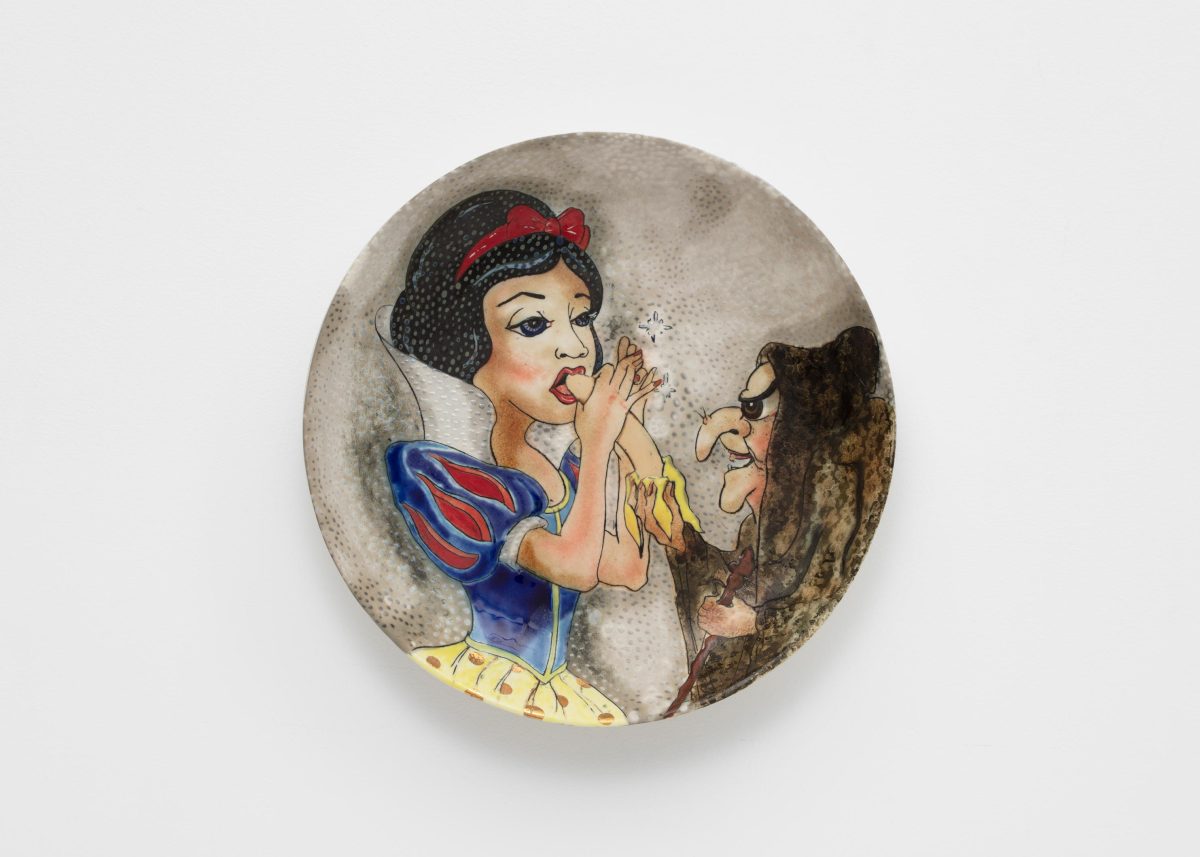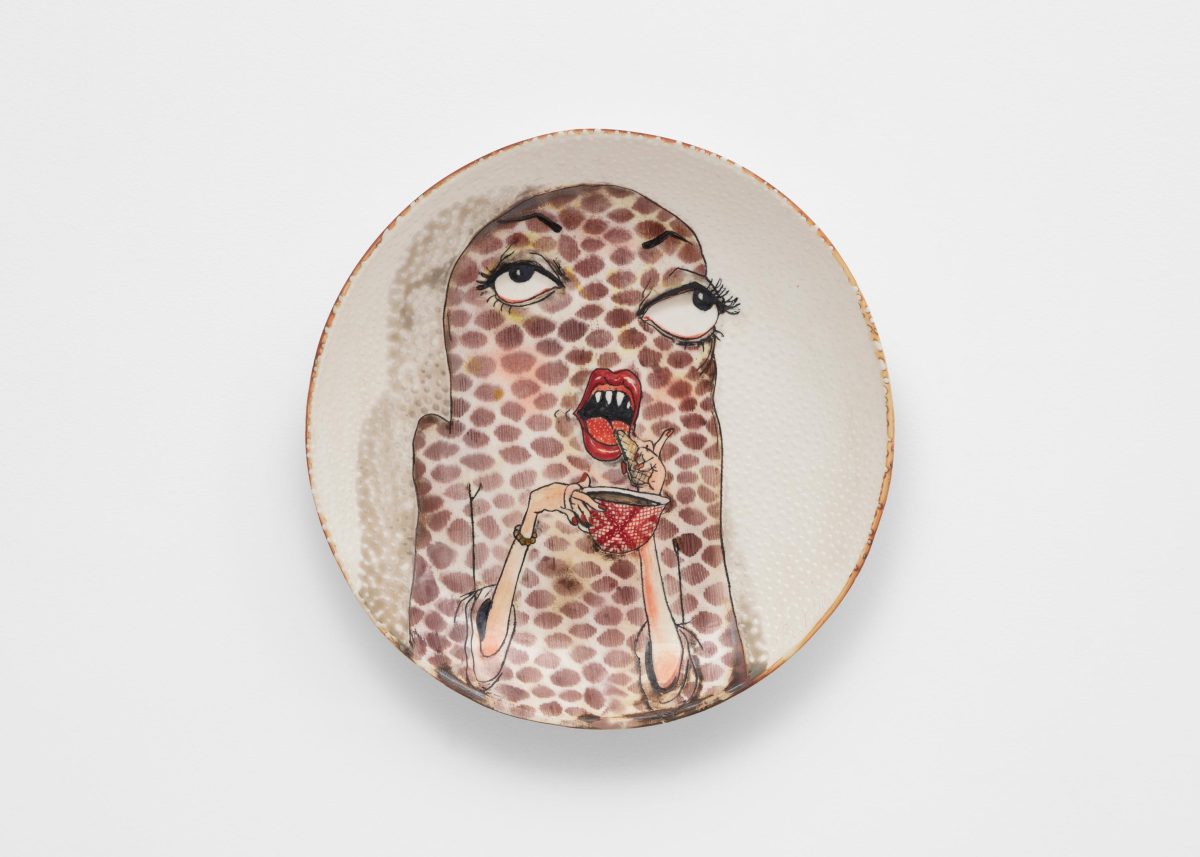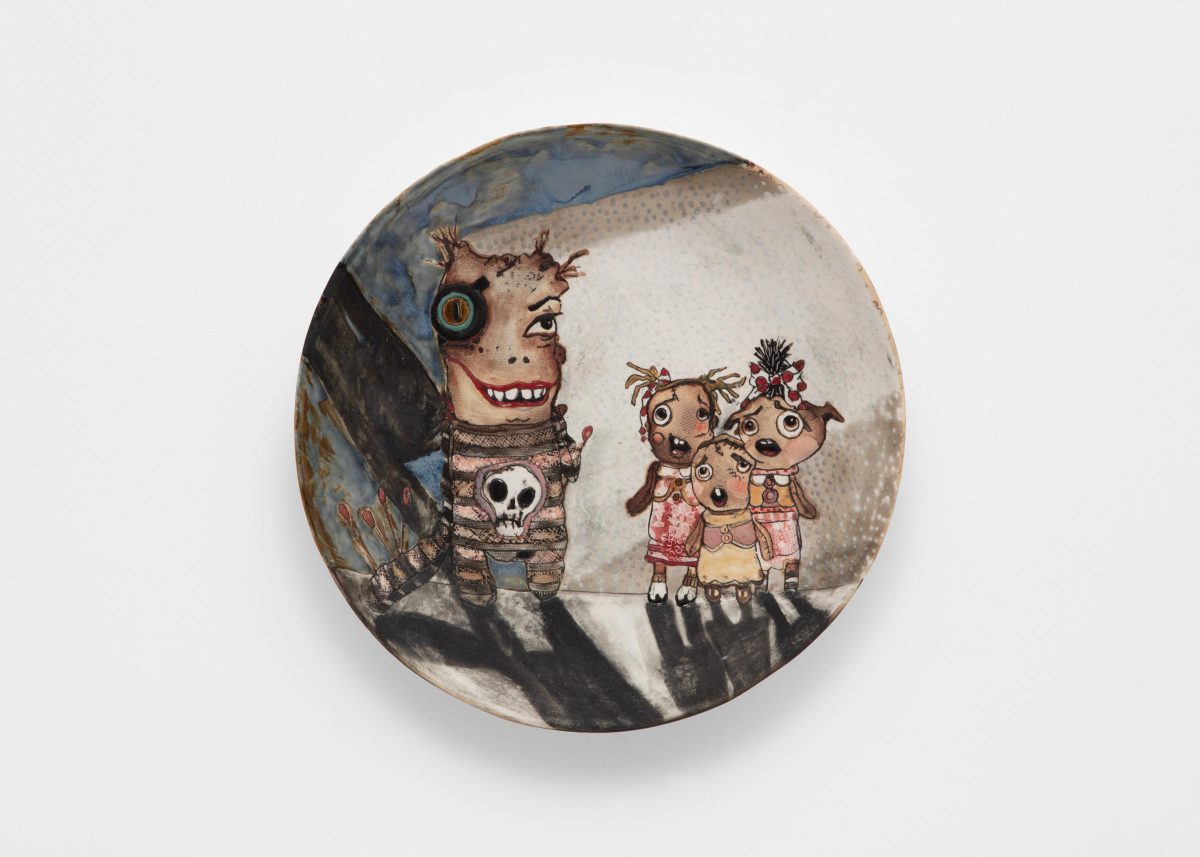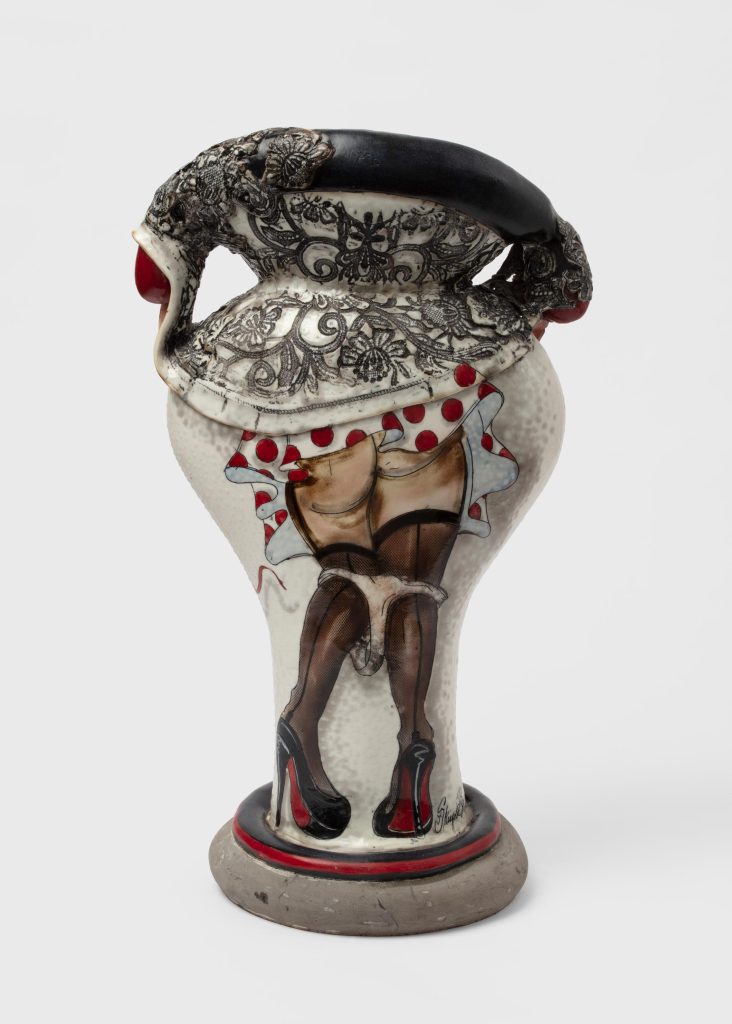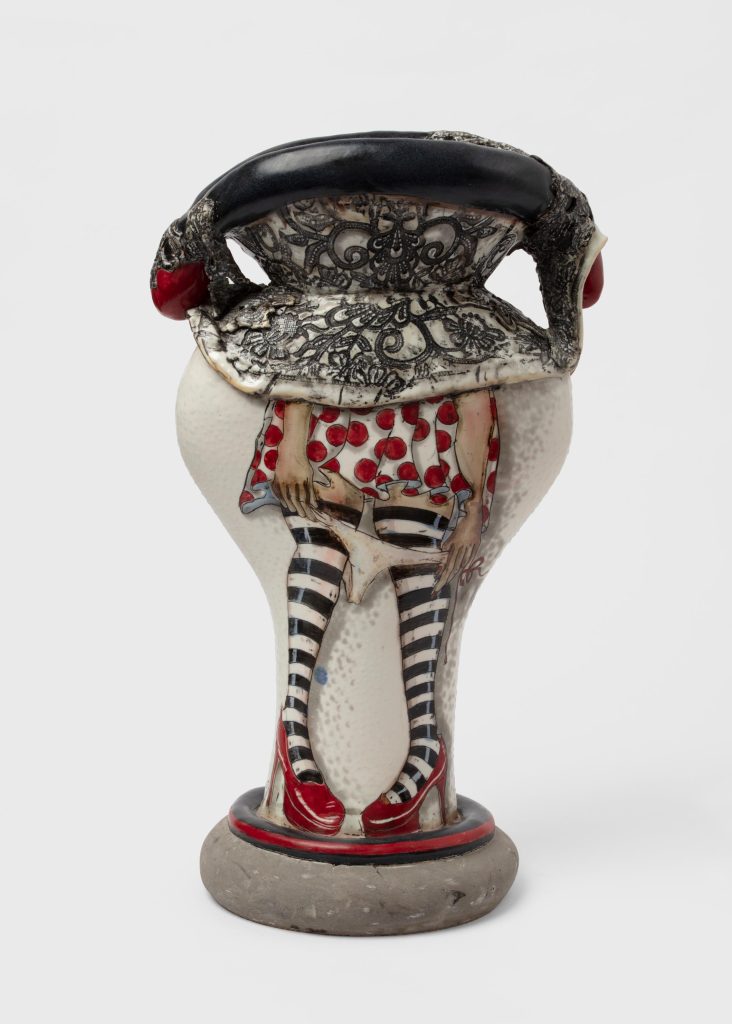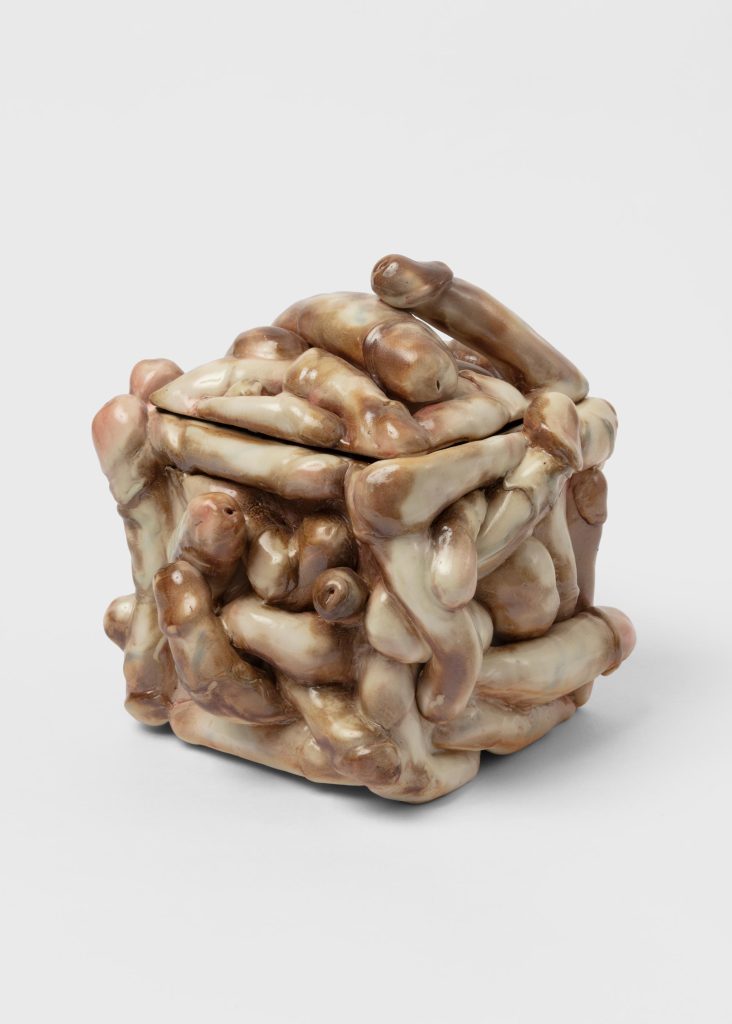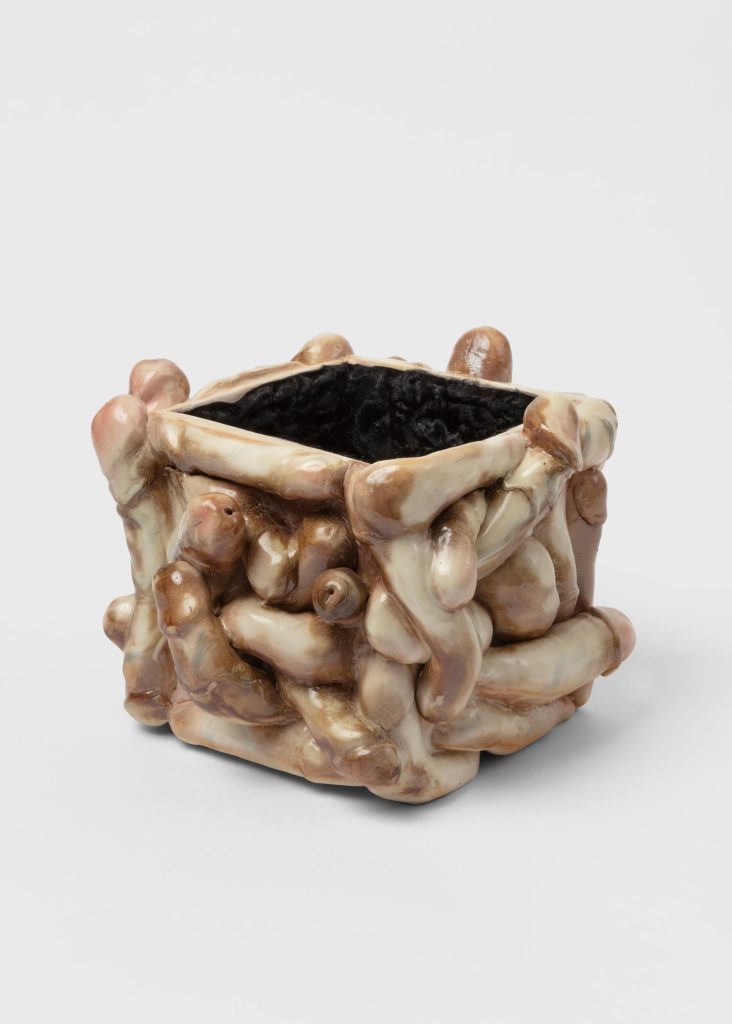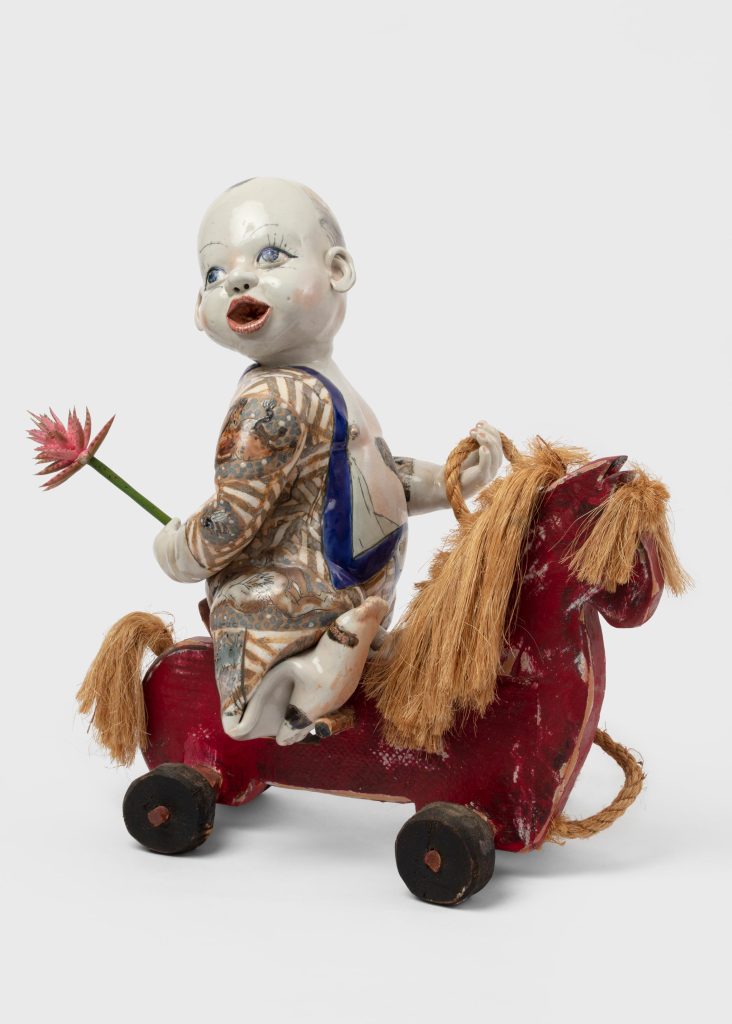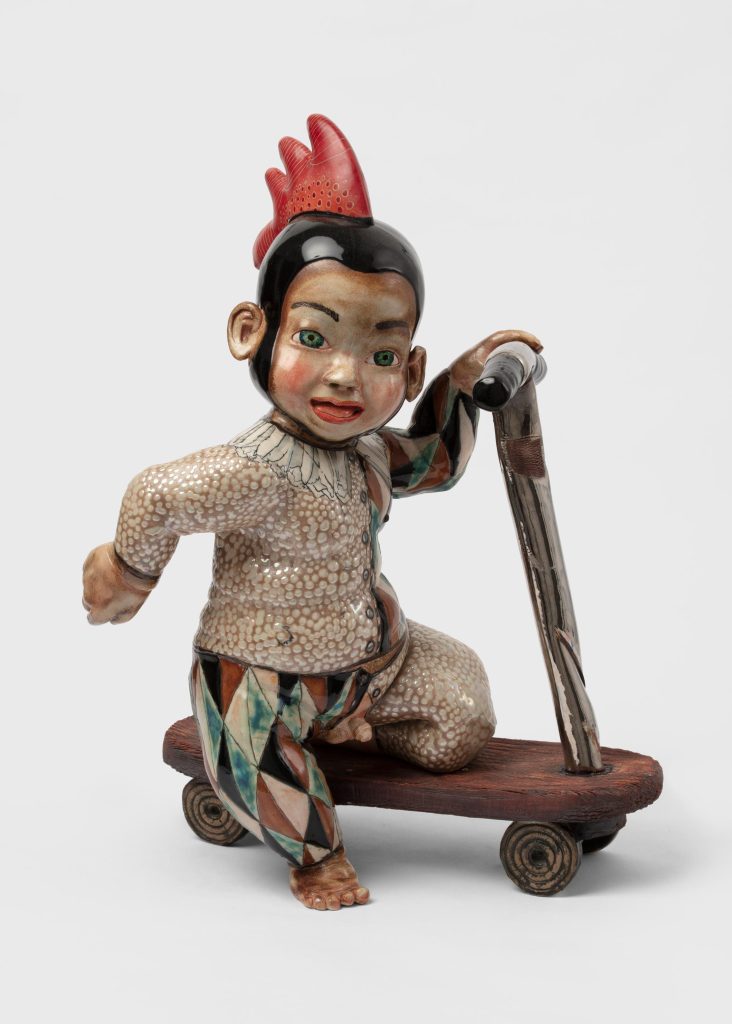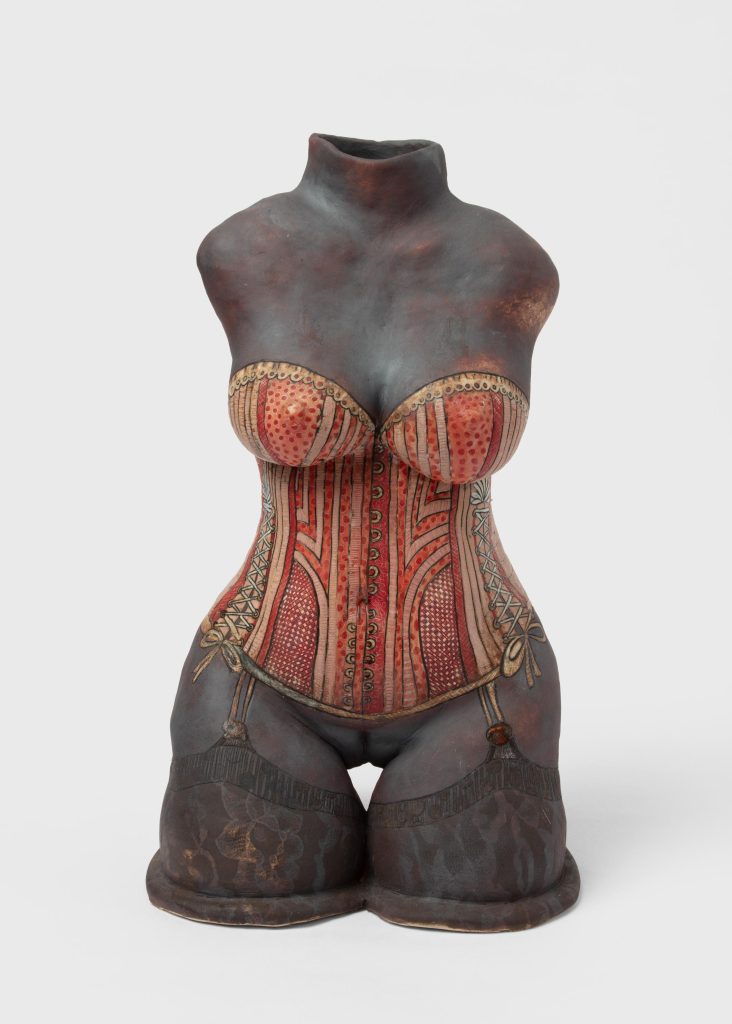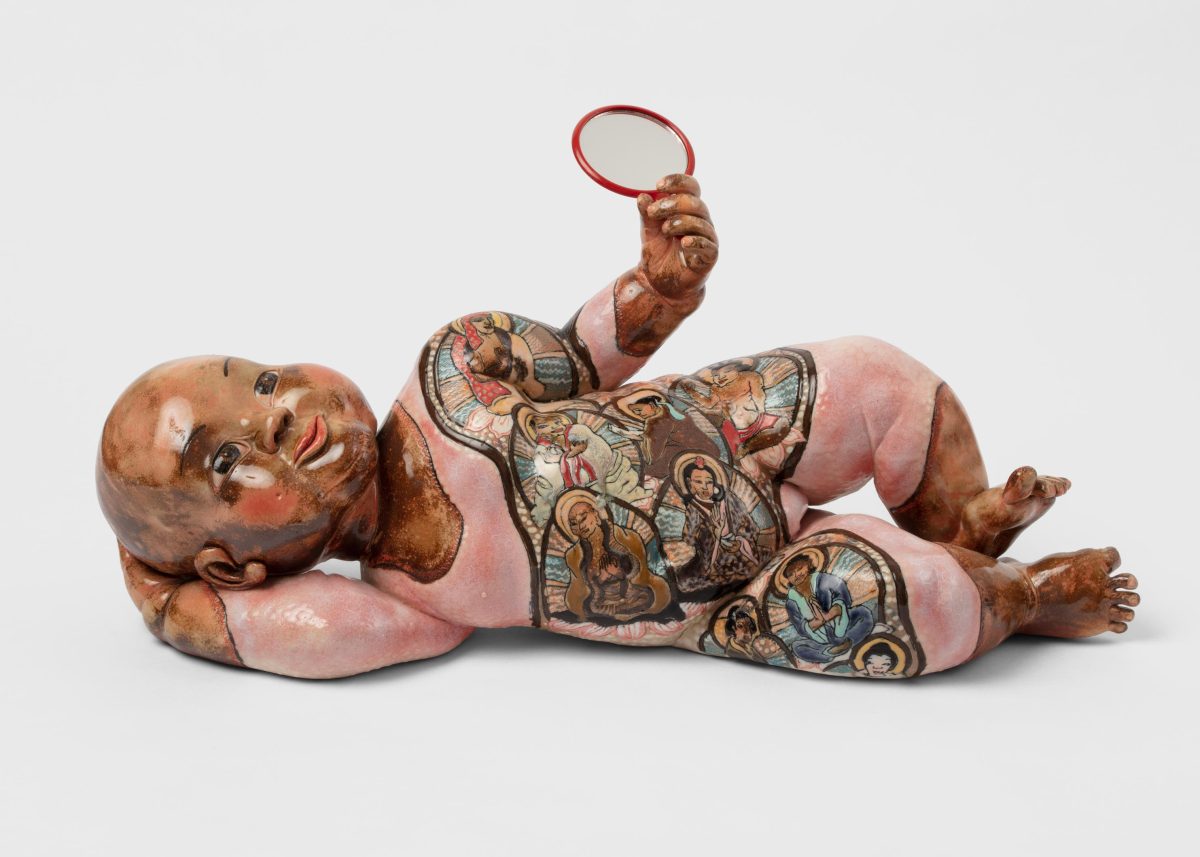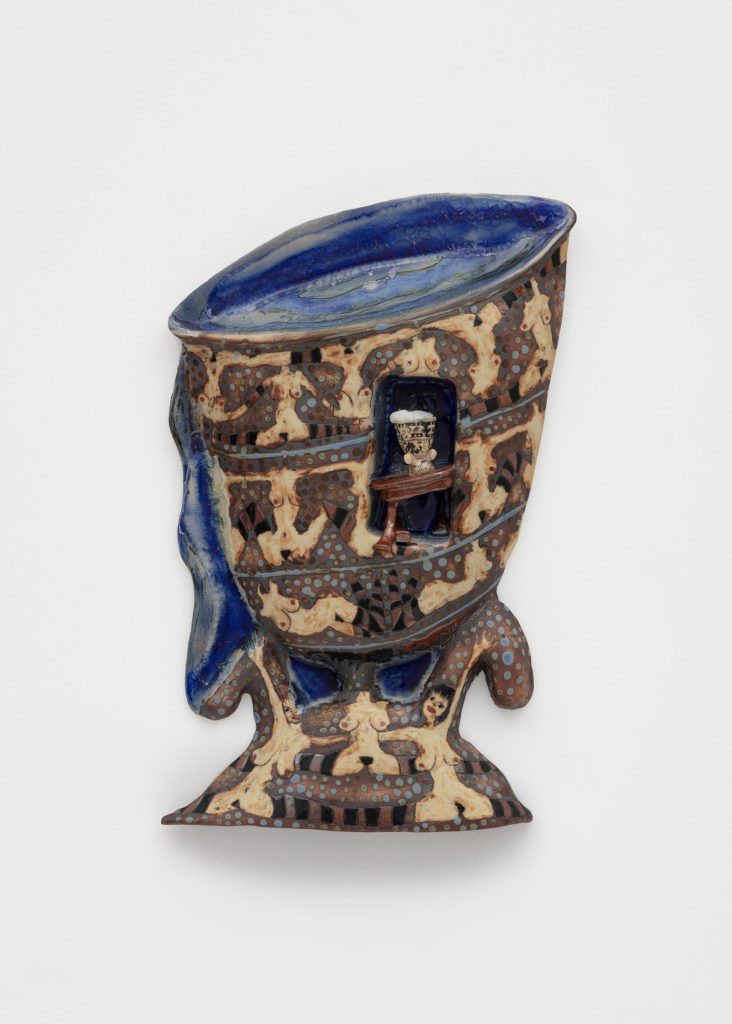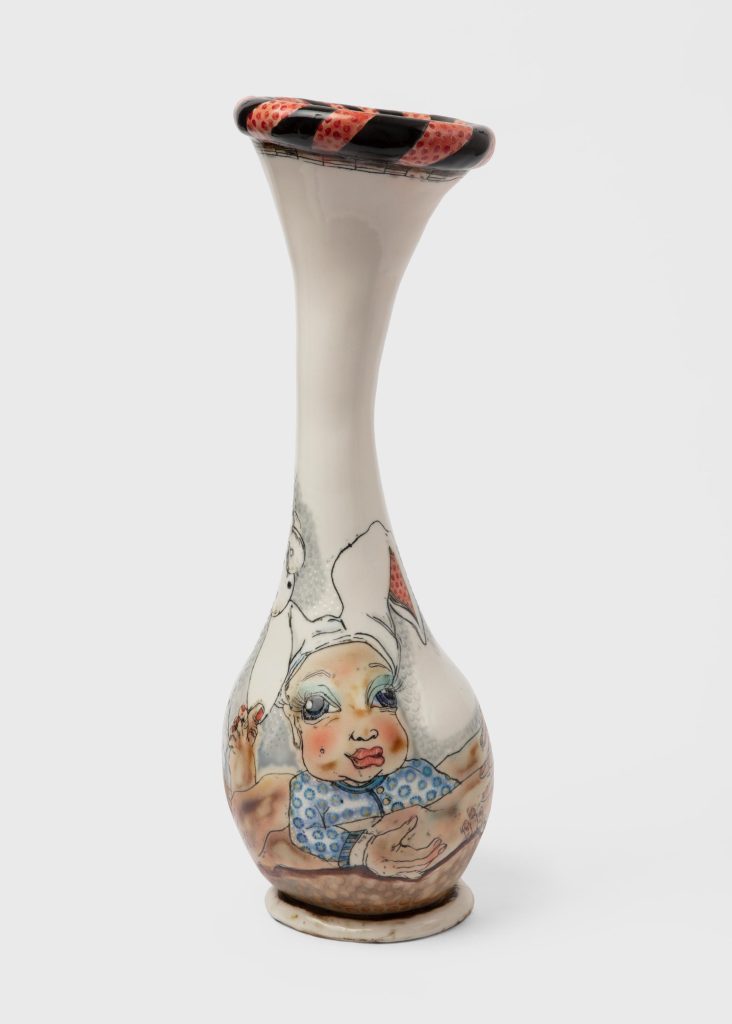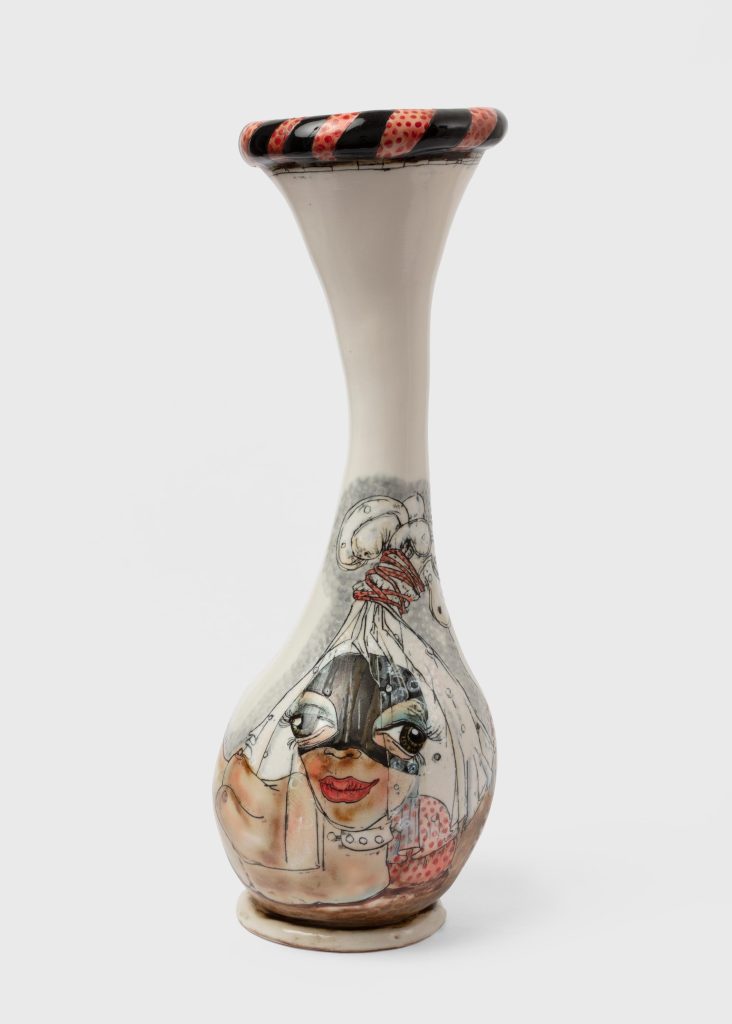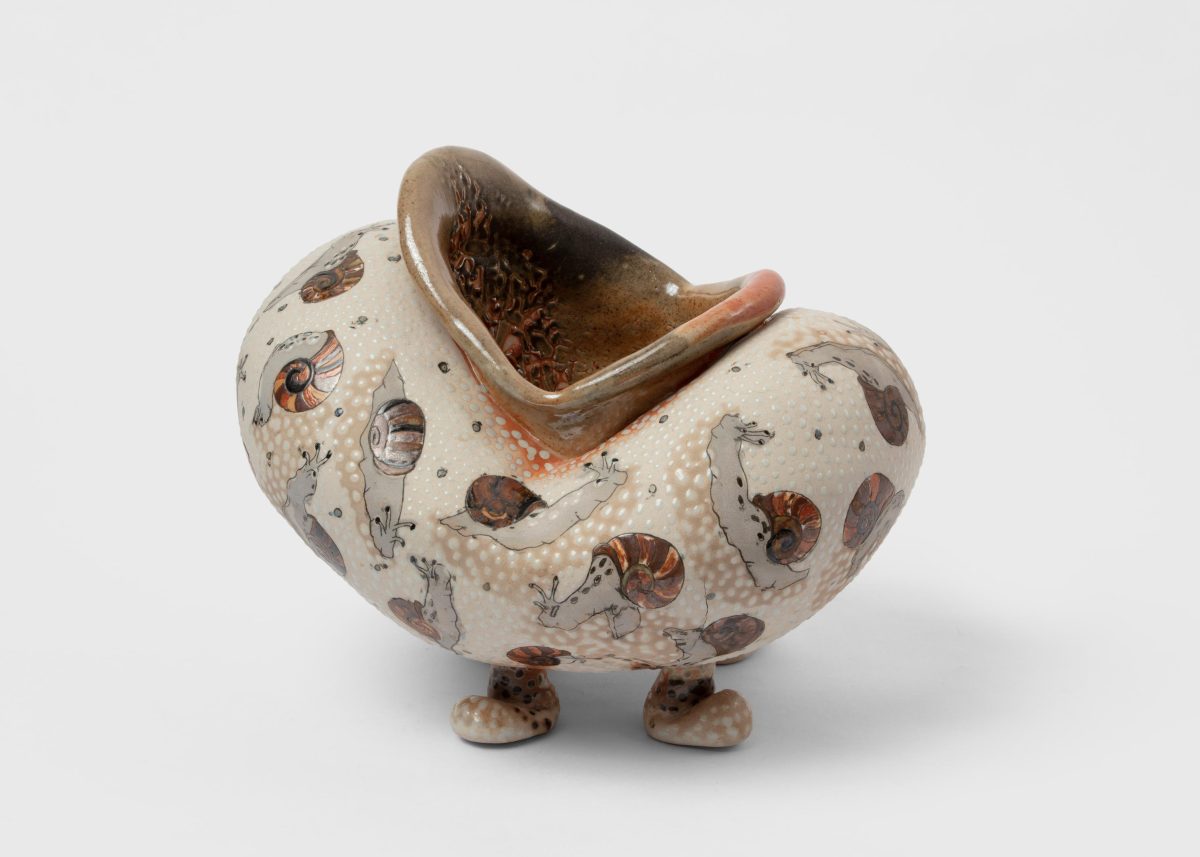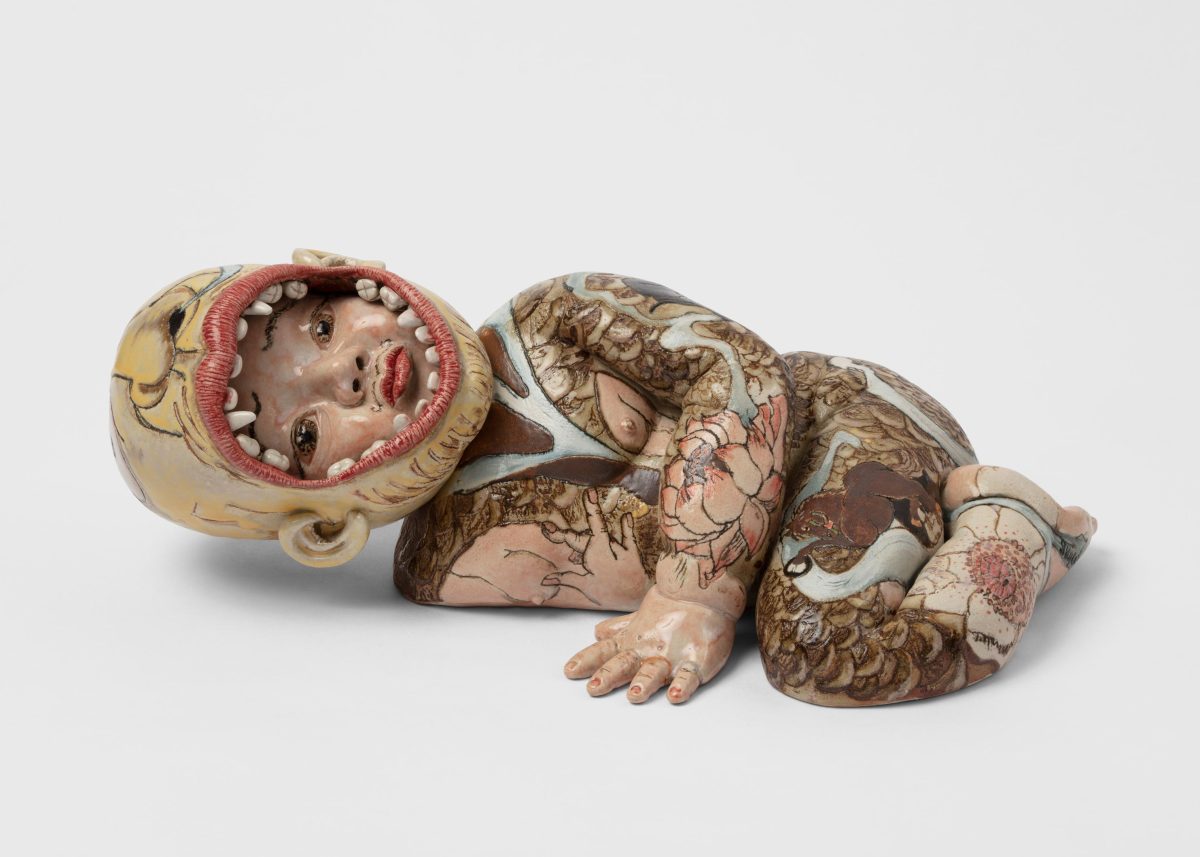
- This event has passed.
kaufmann repetto is glad to announce the first solo show dedicated to Skuja Braden, pseudonym of the international collaborative duo Ingūna Skuja (Latvia) and Melissa D. Braden (USA). The artists, who represented Latvia in the 59th Venice Biennale in 2022, have been working in tandem for more than two decades, achieving an extraordinary craftsmanship in the complex medium of porcelain. Dense with multiple meanings and saturated with humor and wit, their elaborate sculptures populate an exuberant universe that amalgamates queer and feminist perspectives, autobiographical and cross-cultural references, transhistorical and political concerns. The artists’ debut exhibition with the gallery spans across both the New York and Milan venues, presenting two distinct yet interconnected projects.
Employing a material long marginalized and attributed to the realm of handicraft, the domestic dimension of the porcelain is constantly tackled by the witty, provocative richness of Skuja Braden’s imaginative repertoire. Western pinup aesthetics and Japanese erotica, tokens of mass consumer culture and iconic cartoon heroes, capitalist critique and Buddhist wisdom merge on voluptuously shaped vases, plates, and jars that are formed and glazed by hand conjunctly by both artists. The works are unified through the constant exploration, comparison, and juxta positioning of the separate cultures around the world through the lens of the erotic, exemplifying how the artists utilize the body to explore concepts and ideologies. Figures entwined in erotic poses, overtly challenging heteronormative gender expectations, are inspired by the emancipatory Shunga genre, a Japanese art form that flourished between the 16th and 19th century and encouraged sexual pleasure in all its forms, including female and queer sexuality. The patriarchal regulation of women’s bodies and the commodification of female production is another recurrent theme, as in the ongoing series Charity Collection, where pairs of female breasts are represented under the guise of commercial milk bottles, humorously advertising milk from all kinds of animals, such as dolphins, zebras, moose, leopard, and giraffes. Like in a medieval bestiary, fantastique and grotesque creatures appear throughout Skuja Braden’s practice, including swans and dalmatians, fish and serpents, amorphous sea monsters and even archetypes from pop culture such as Pink Panther and Minnie Mouse.
The New York presentation, entitled Pardon My Body, brings together works from Skuja Braden’s residency in California between 2001 and 2008, and from the last 15 years living in the countryside of Latvia. Reflecting on their personal experience of restricted bodily autonomy on different levels – inflicted by American immigration policy on the one hand and by Latvian homophobia on the other – the works are all related thematically and conceptually, exploring how the private and the public are intertwined. The different socio-political spheres of men and women in relation to power are effectively addressed in the double entendre of Cock Block, while women’s reproductive and sexual freedom are thematized in Still Life, a bouquet of bronzed tampons, as well as in Ball and Chain and Pocket Book, where a woman’s vagina is playfully represented as an egg. The ongoing series of Babies consists in large-sized sculptures acting as vehicles for multiple opposing ideas. Spanning more than two decades, these range from the early Flower Child – created out of a moment of distress upon Bush’s presidential election in 2000, partly supported by people who had been hippies in the 1960’s – to the recent Flower Power, a large lingam vessel covered in rafflesia flowers with vulva centers, where the simplified form of the phallus is subverted by turning it into a backdrop for the surrounding flowers.
Strange Bargain, title of the presentation in Milan, is an ironic statement about the paradoxical nature of commerce, and specifically about the ‘bargain’ as an advantageous purchase at an unexpectedly cheap price. Referring to the macro-economic, exploitative principles of late Capitalism, but also to the art market itself, Skuja Braden juxtaposes Greed, a wall-mounted slyly smiling skull wearing a crown, and a new iteration of the Charity Collection, literally bearing in mind its reference to the principle of caritas, one of the seven virtues. “Charity is free, so how much can one pay for a collection of it?” ask Skuja Braden, “What if ‘greed’ sits right next to the collection? What is the price for ‘greed’?” Acting against the backdrop of this dilemma, the Milanese show features several works depicting two women lovers, a buxom blonde Marilyn Monroe and a seductive Geisha. They are Skuja Braden’s signature ‘action figures’ and alter egos, their fictive identity employed to investigate the absence of individual authorhood. Omnipresent throughout their practice, they enjoy love making but at the same time seem to perform the function of vigil observers of the plethora of thought-provoking narratives that the art-makers unleash in their ebullient oeuvre.
kaufmann repetto è lieta di annunciare la prima personale dedicata a Skuja Braden, pseudonimo del duo collaborativo internazionale composto da Ingūna Skuja (Lettonia) e Melissa D. Braden (USA). Le artiste, che hanno rappresentato la Lettonia alla 59a Biennale di Venezia nel 2022, lavorano in tandem da oltre due decenni, raggiungendo una straordinaria maestria nel complesso medium della porcellana. Dense di significati molteplici e sature di umorismo e arguzia, le loro sculture elaborate popolano un universo che amalgama prospettive queer e femministe, riferimenti autobiografici e inter-culturali, preoccupazioni trans-storiche e politiche. La mostra d’esordio delle artiste con la galleria spazia tra le sedi di New York e Milano, presentando due progetti distinti ma interconnessi.
A lungo marginalizzata e considerata di pertinenza dell’artigianato, la porcellana è messa costantemente in gioco nella sua dimensione domestica dalla ricchezza arguta e provocatoria dell’immaginario di Skuja Braden. Estetica pinup occidentale ed erotica giapponese, tracce di cultura di consumo di massa e iconici eroi dei fumetti, critica capitalista e saggezza buddista si fondono nelle forme voluttuose di vasi, piatti e ciotole che le due artiste modellano e smaltano a quattro mani. Accomunate dall’esplorazione, il paragone e la giustapposizione costanti delle diverse culture del mondo attraverso la lente dell’erotico, le opere esemplificano il modo in cui le artiste usano il corpo per esplorare concetti e ideologie. Figure avvinghiate in pose erotiche che sfidano apertamente aspettative di genere eteronormative sono ispirate agli Shunga, emancipatoria forma d’arte giapponese fiorita tra il XVI e XIX secolo che incoraggiava il piacere erotico in tutte e sue forme, sessualità femminile e queer incluse. La regolamentazione patriarcale del corpo delle donne e la mercificazione della produzione femminile è un altro tema ricorrente, come nella serie Charity Collection, in cui coppie di seni femminili sono rappresentate sotto forma di cartoni del latte che pubblicizzano ironicamente latte di tutti i tipi di animali, quali delfini, zebre, alci, leopardi e giraffe. Come in un bestiario medievale, creature fantastiche e grottesche appaiono nella pratica di Skuja Braden, compresi cigni e dalmati, pesci e serpenti, mostri marini amorfi e perfino archetipi della cultura pop come la Pantera Rosa e Topolina.
La presentazione di New York, intitolata Pardon My Body, riunisce opere provenienti dal soggiorno in California di Skuja Braden tra il 2001 e il 2008, e dagli ultimi quindici anni vissuti nella campagna lettone. Riflettendo sulla loro esperienza di limitata autonomia corporea a diversi livelli – inflitta dalla politica di immigrazione americana da un lato e dall’omofobia lettone dall’altro – le opere sono tutte legate tematicamente e concettualmente, esplorando il modo in cui privato e pubblico si intrecciano. Le diverse sfere socio-politiche di uomini e donne in relazione al potere sono affrontate con efficacia nel doppio senso di Cock Block, mentre la libertà riproduttiva e sessuale sono tematizzate in Still Life, un bouquet di tamponi realizzato in bronzo, come anche in Ball and Chain e Pocket Book, in cui una vagina di donna è rappresentata giocosamente come un uovo. La serie Babies consiste in sculture di grandi dimensioni che diventano veicoli per molteplici idee in opposizione tra loro. Abbracciando oltre due decenni, queste variano dalla iniziale Flower Child – creata in un momento di angoscia dopo l’elezione a presidente di Bush nel 2000, in parte sostenuta da persone che erano state hippy negli anni ’60 – alla recente Flower Power, un grande vaso lingam ricoperto di fiori di rafflesia con vulve al centro, dove la forma stilizzata del fallo è sovvertita trasformandolo in uno sfondo o in piedistallo per i fiori circostanti.
Strange Bargain, titolo della presentazione di Milano, è una dichiarazione ironica sulla natura paradossale del commercio, in particolare sull’‘affare’ in quanto acquisto vantaggioso a un prezzo inaspettatamente basso. Riferendosi ai principi macro-economici e di sfruttamento del tardo capitalismo, ma anche allo stesso mercato dell’arte, Skuja Braden accosta Greed, un teschio dal sorriso furbesco che indossa una corona a una nuova iterazione di Charity Collection che tiene letteralmente presente il suo riferimento al principio di caritas, una delle sette virtù. “La carità è gratis, quindi quanto si può pagare se la collezioni?”, chiede Skuja Braden. “E se l‘avidità’ venisse esposta accanto alla ‘collezione della carità’? Qual è il prezzo dell’‘avidità’?”. Sullo sfondo di questo dilemma, la mostra milanese presenta diverse opere che raffigurano donne amanti, una prosperosa Marilyn Monroe bionda e una seducente geisha. Sono le ‘action figures’, nonché alter ego, tipiche di Skuja Braden, le loro identità immaginarie impiegate per indagare l’assenza di autorialità individuale. Onnipresenti in tutta la loro pratica, amano fare l’amore ma allo stesso tempo sembrano svolgere la funzione di vigili osservatrici della pletora di narrative provocatorie che le artiste scatenano nella loro opera esuberante.

